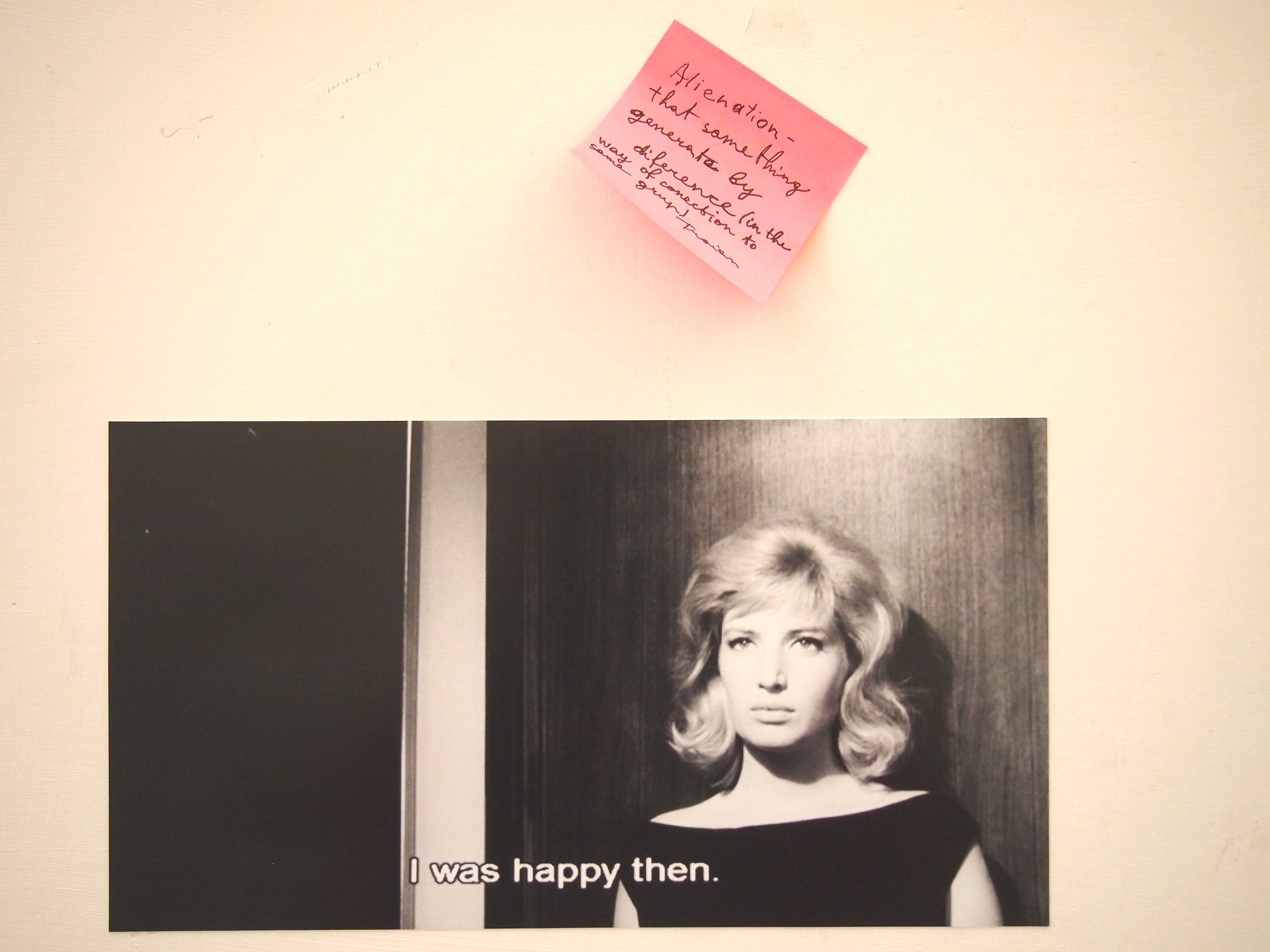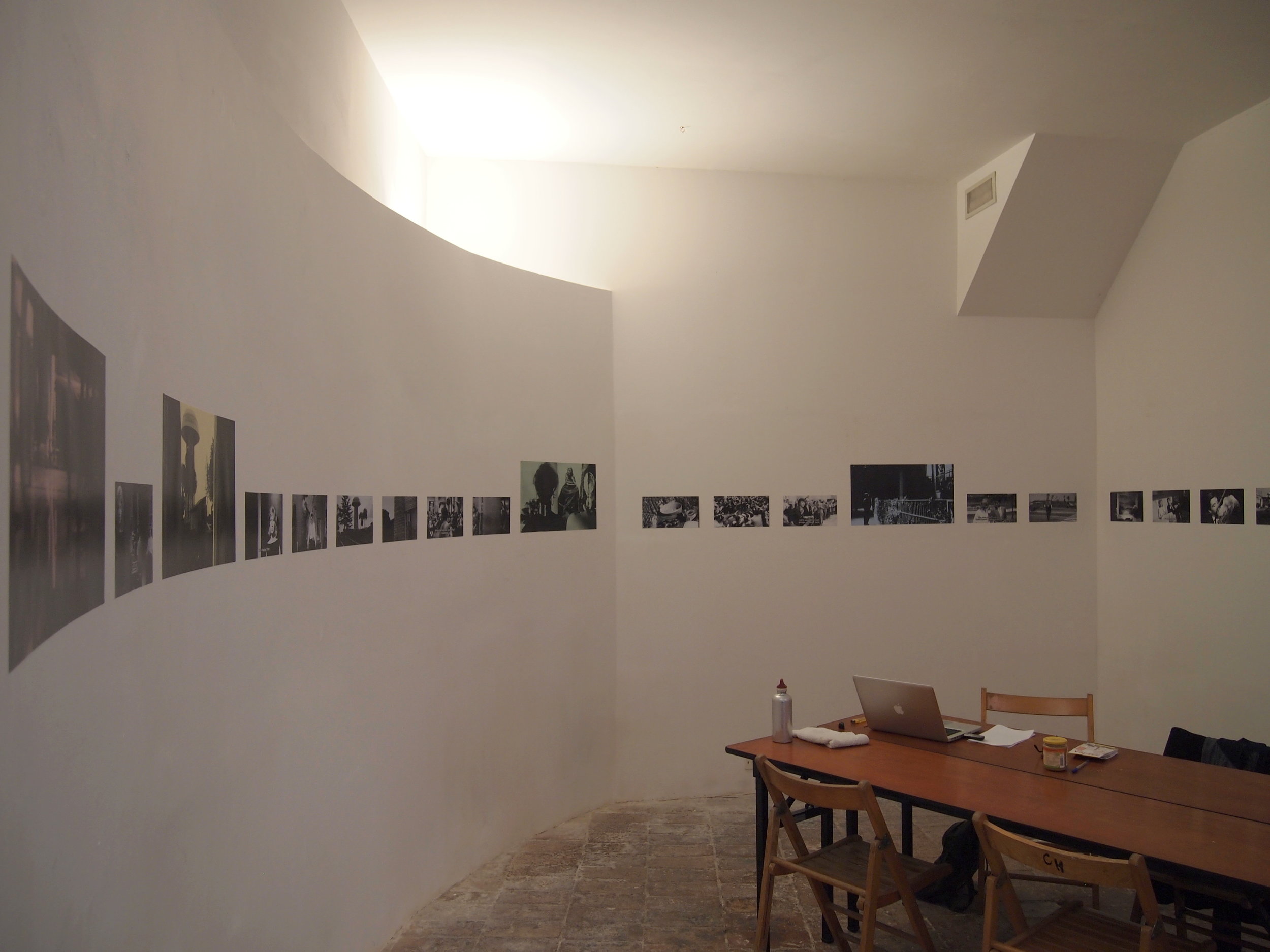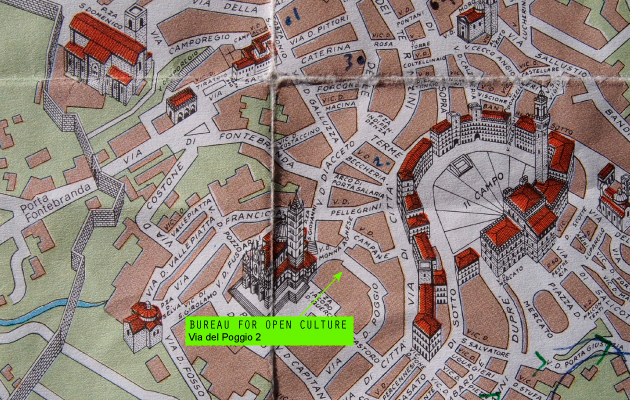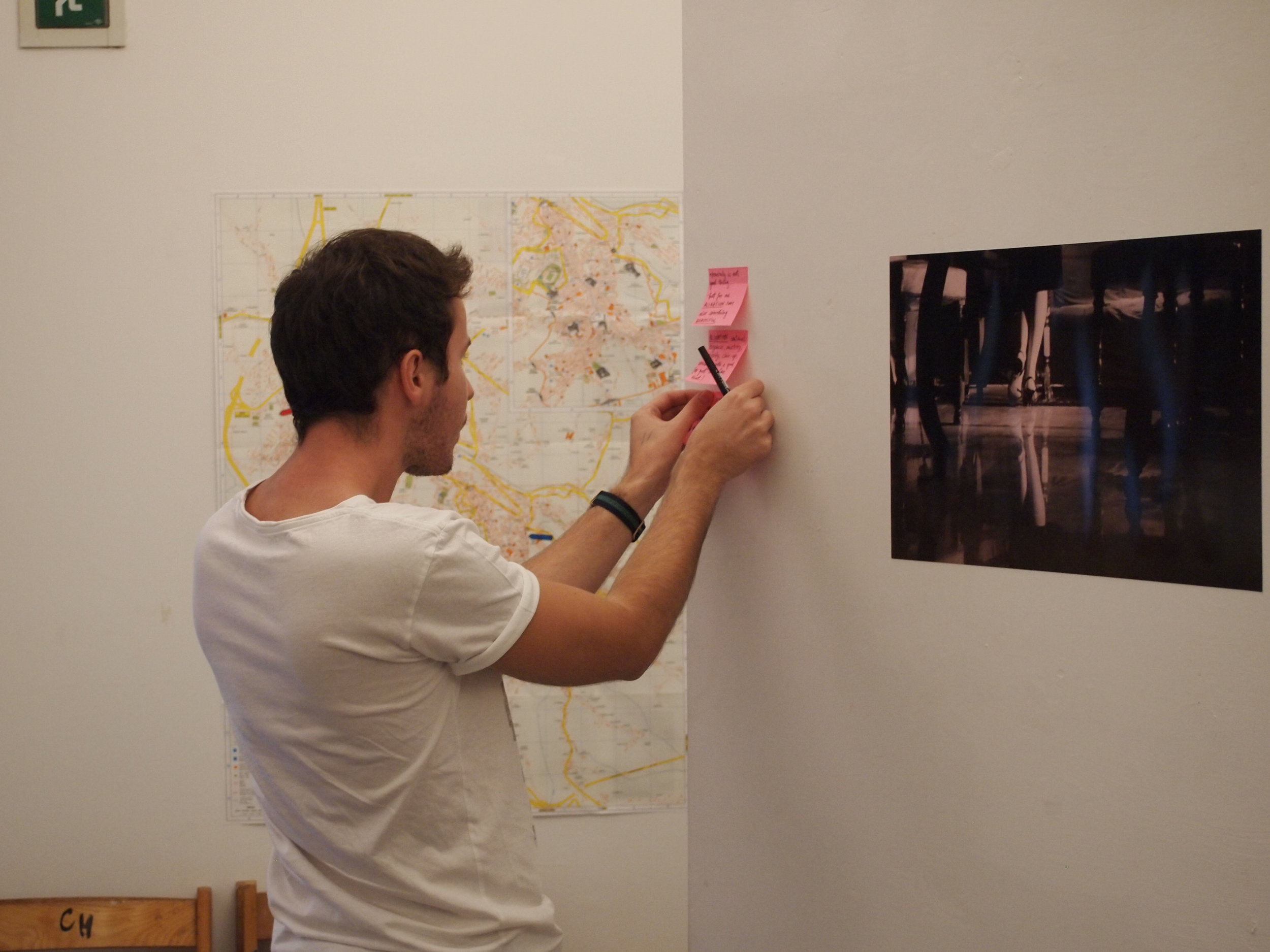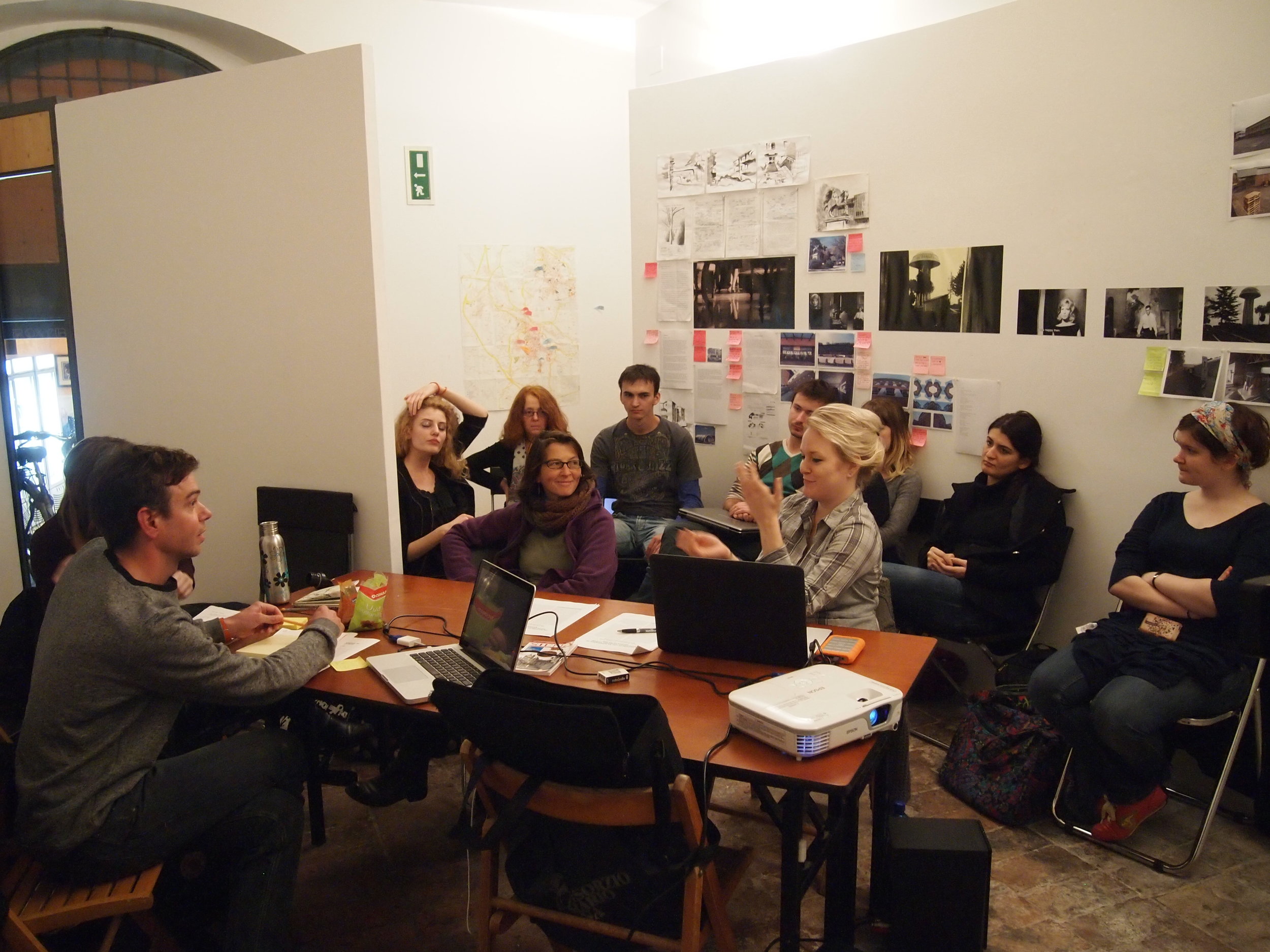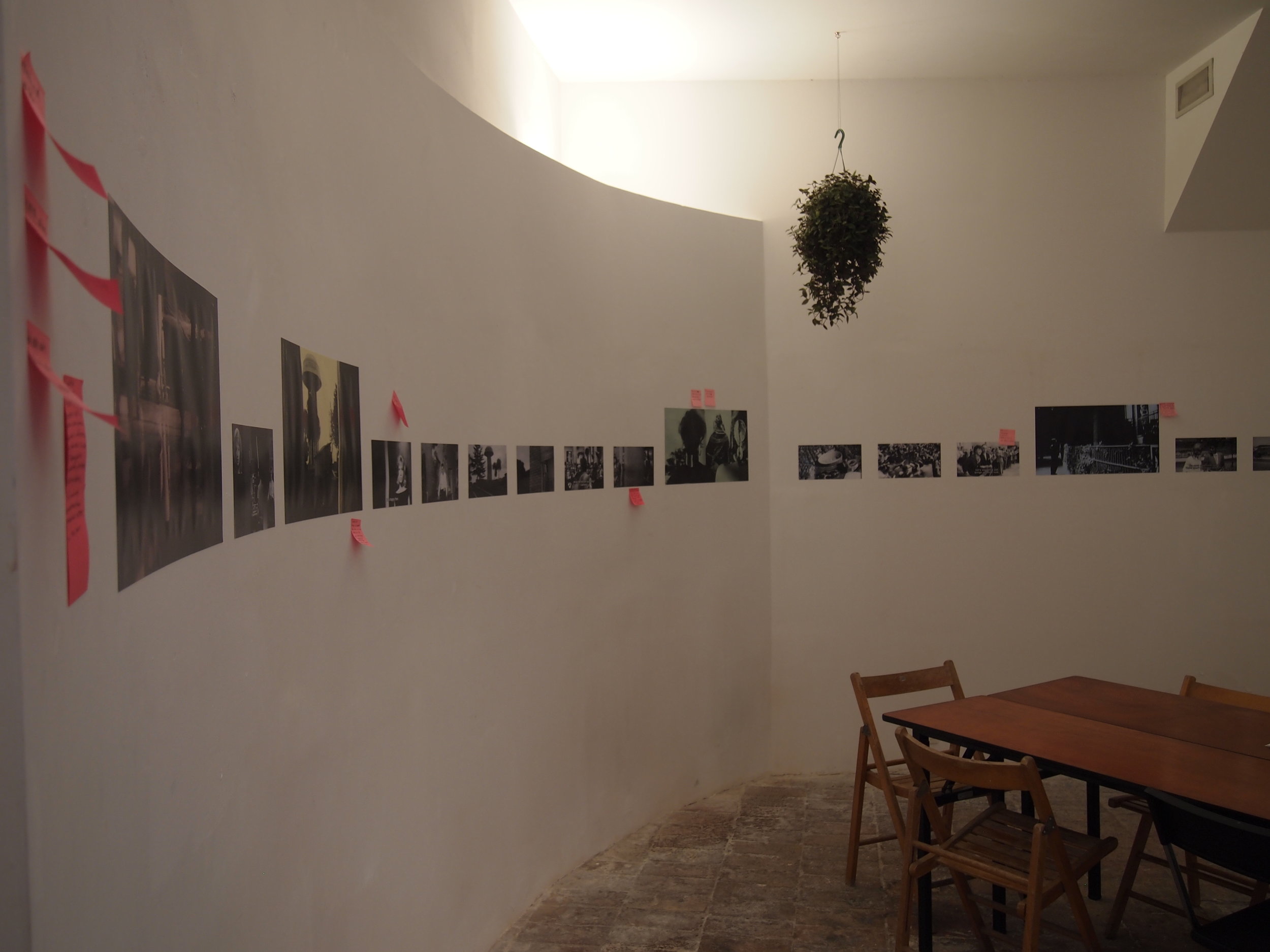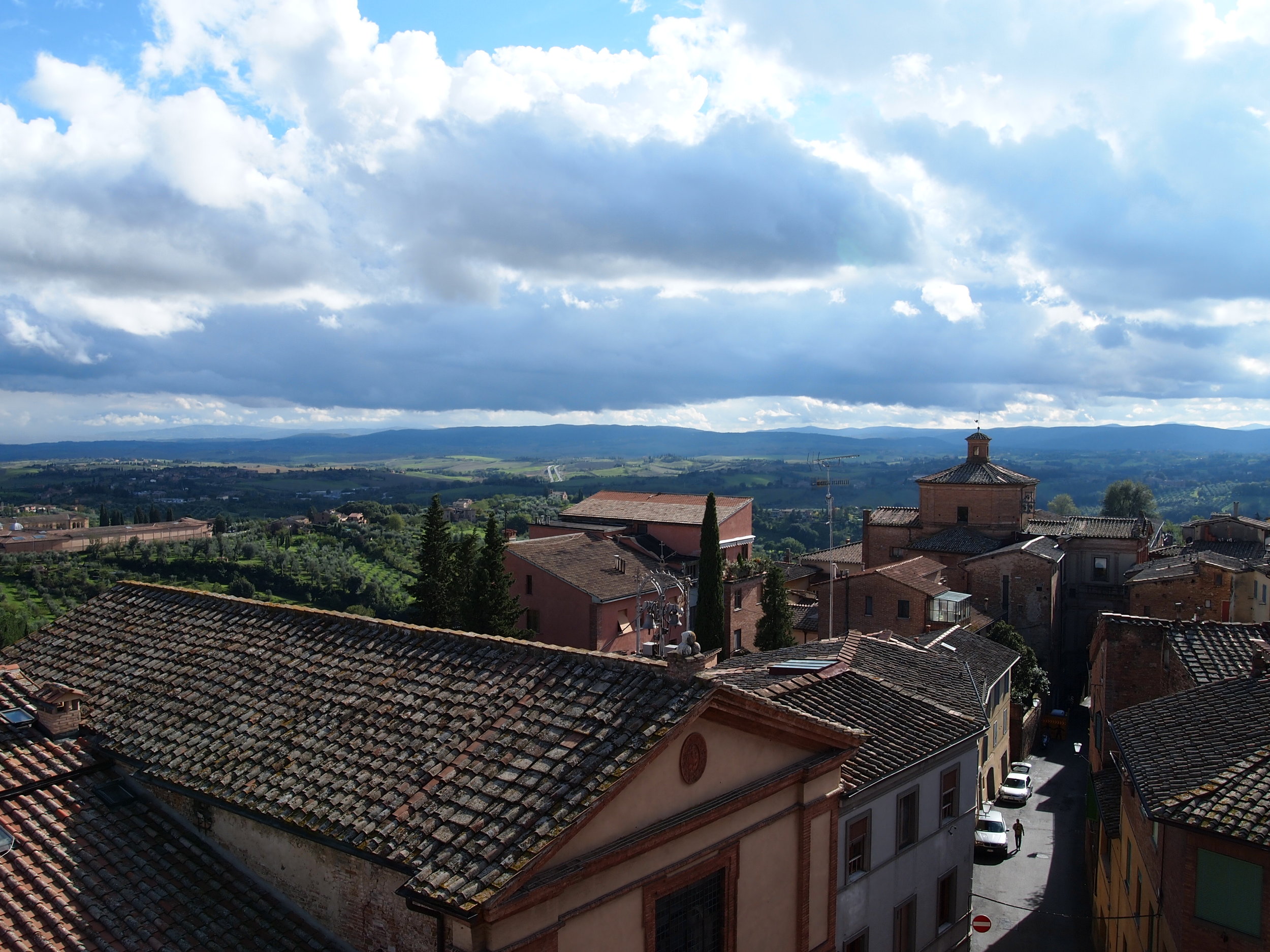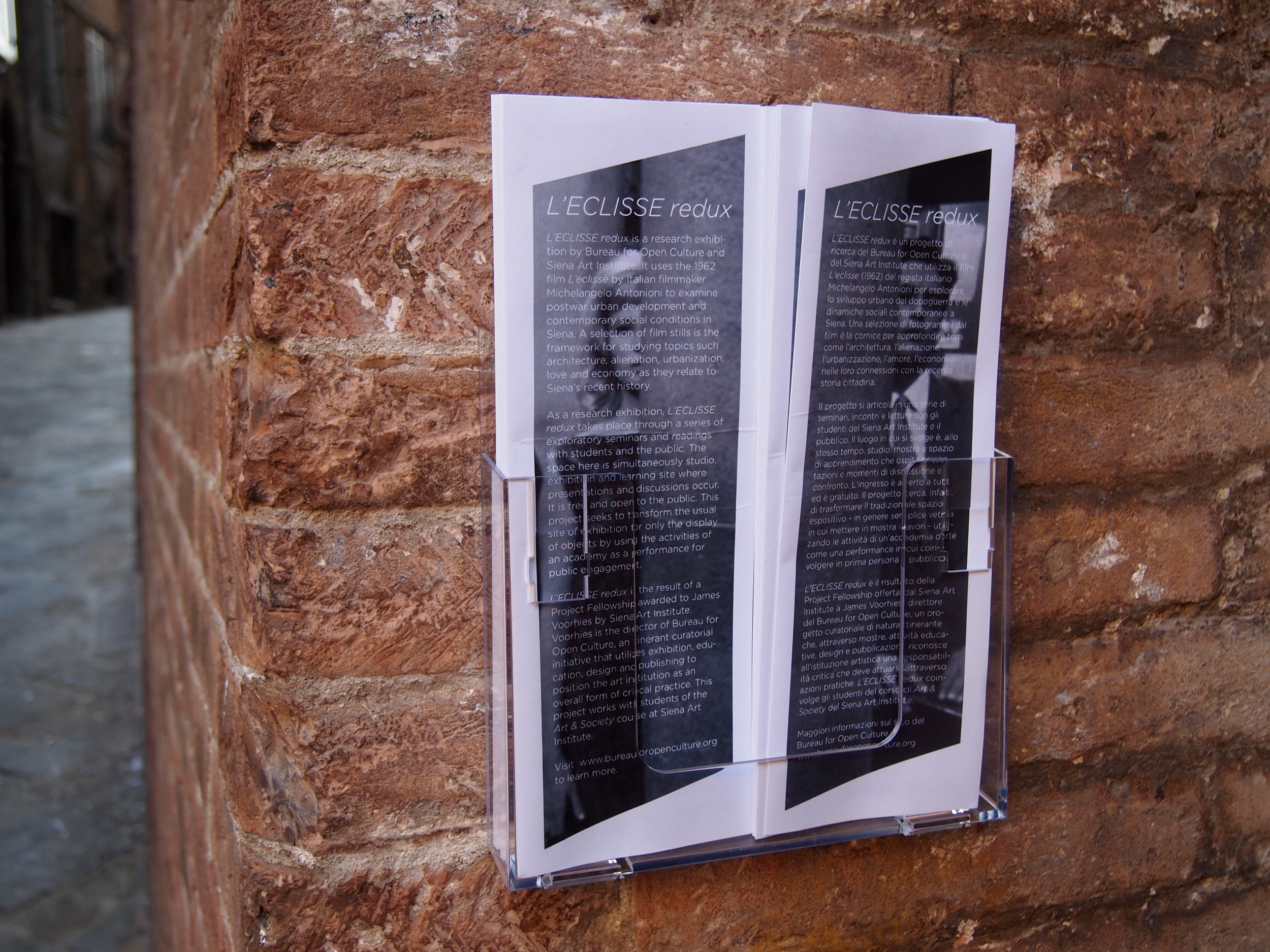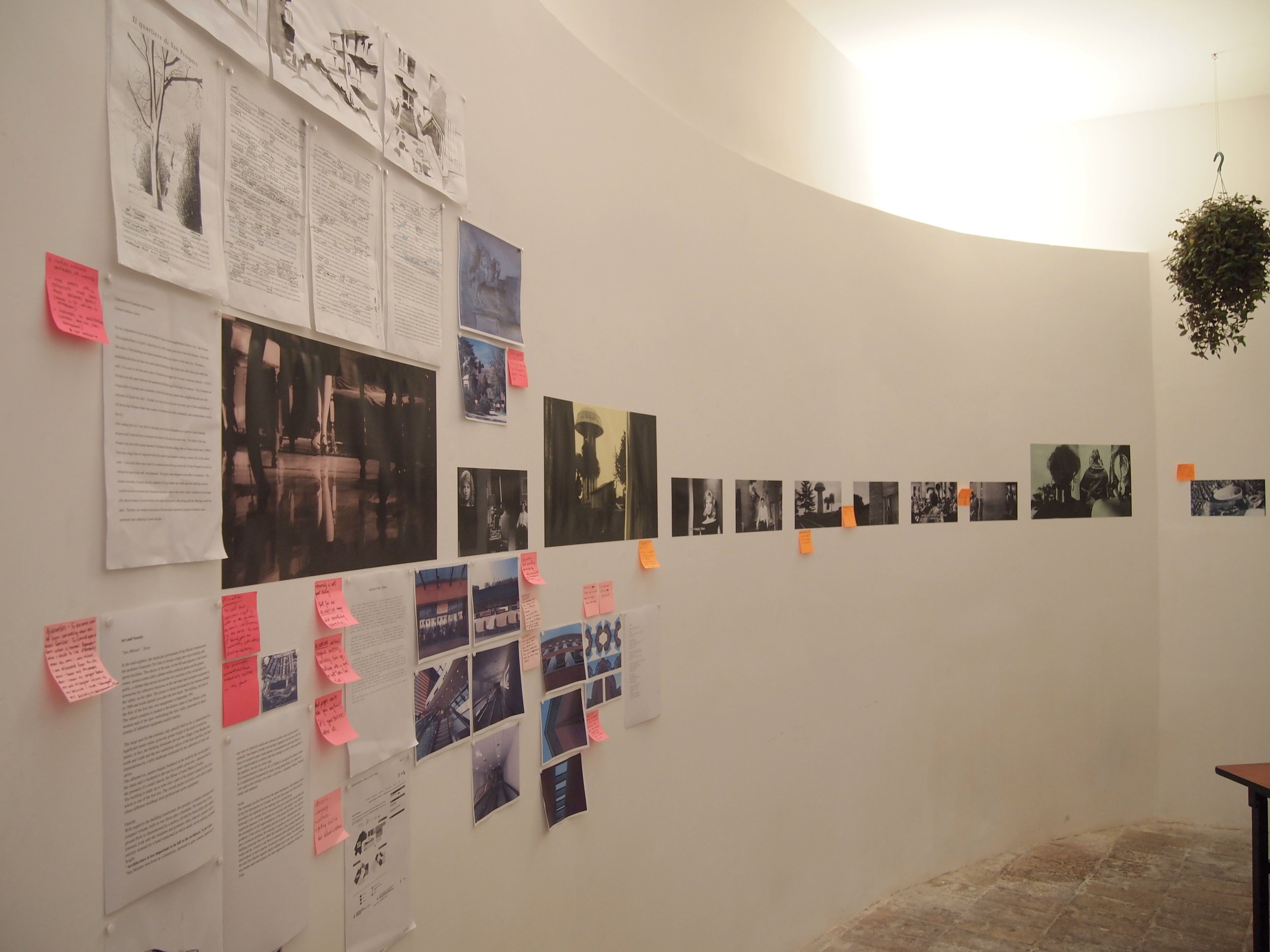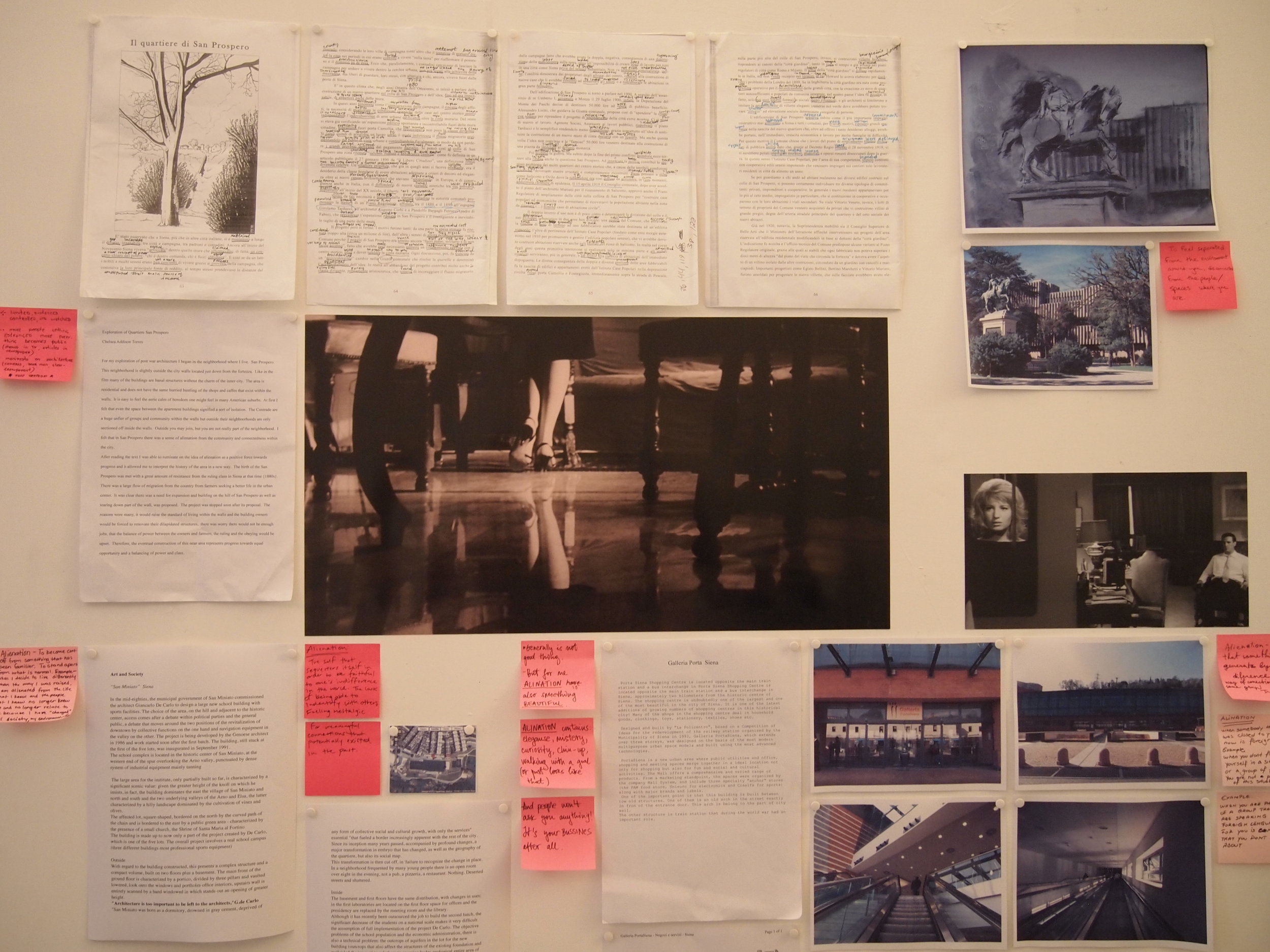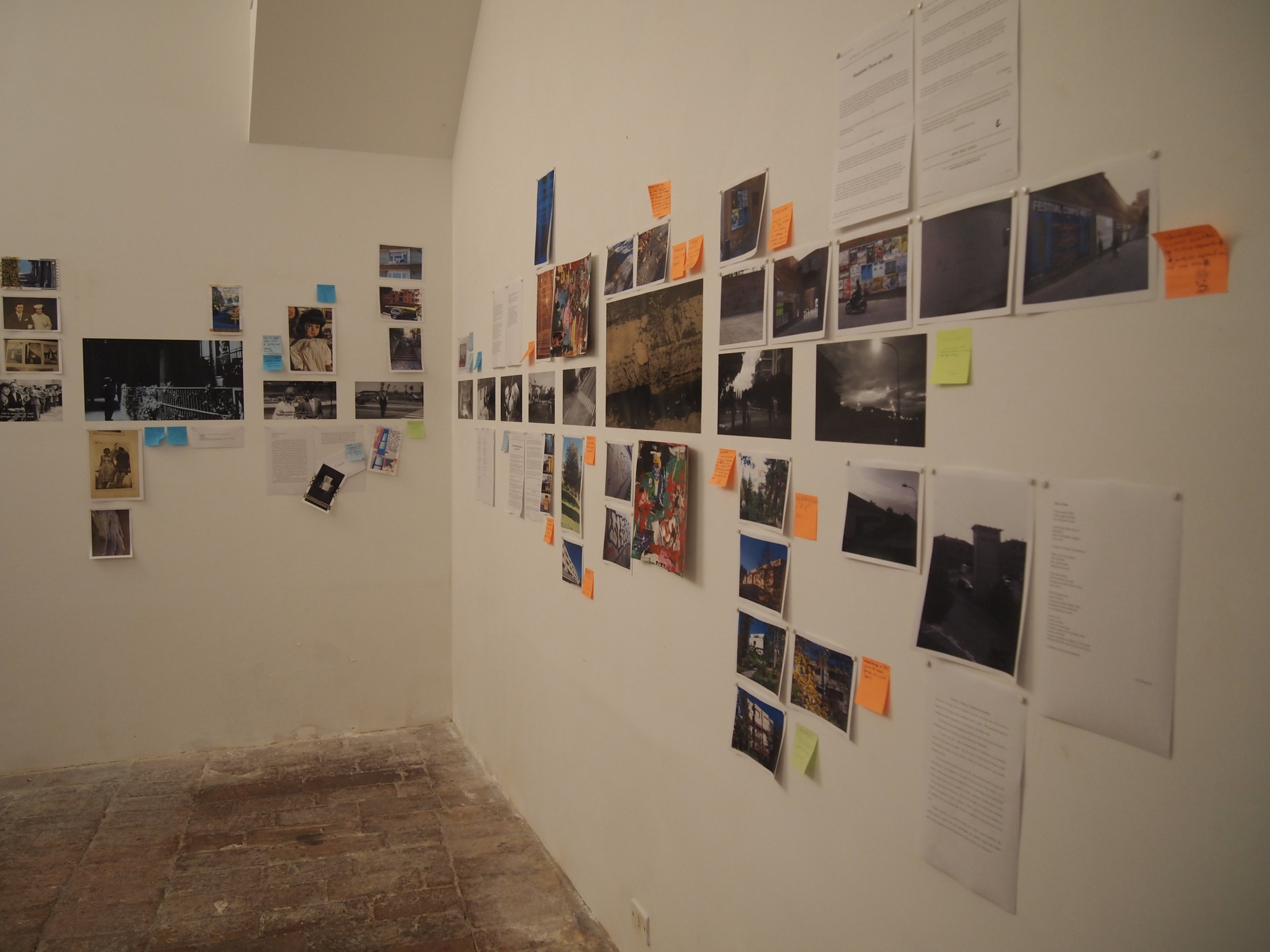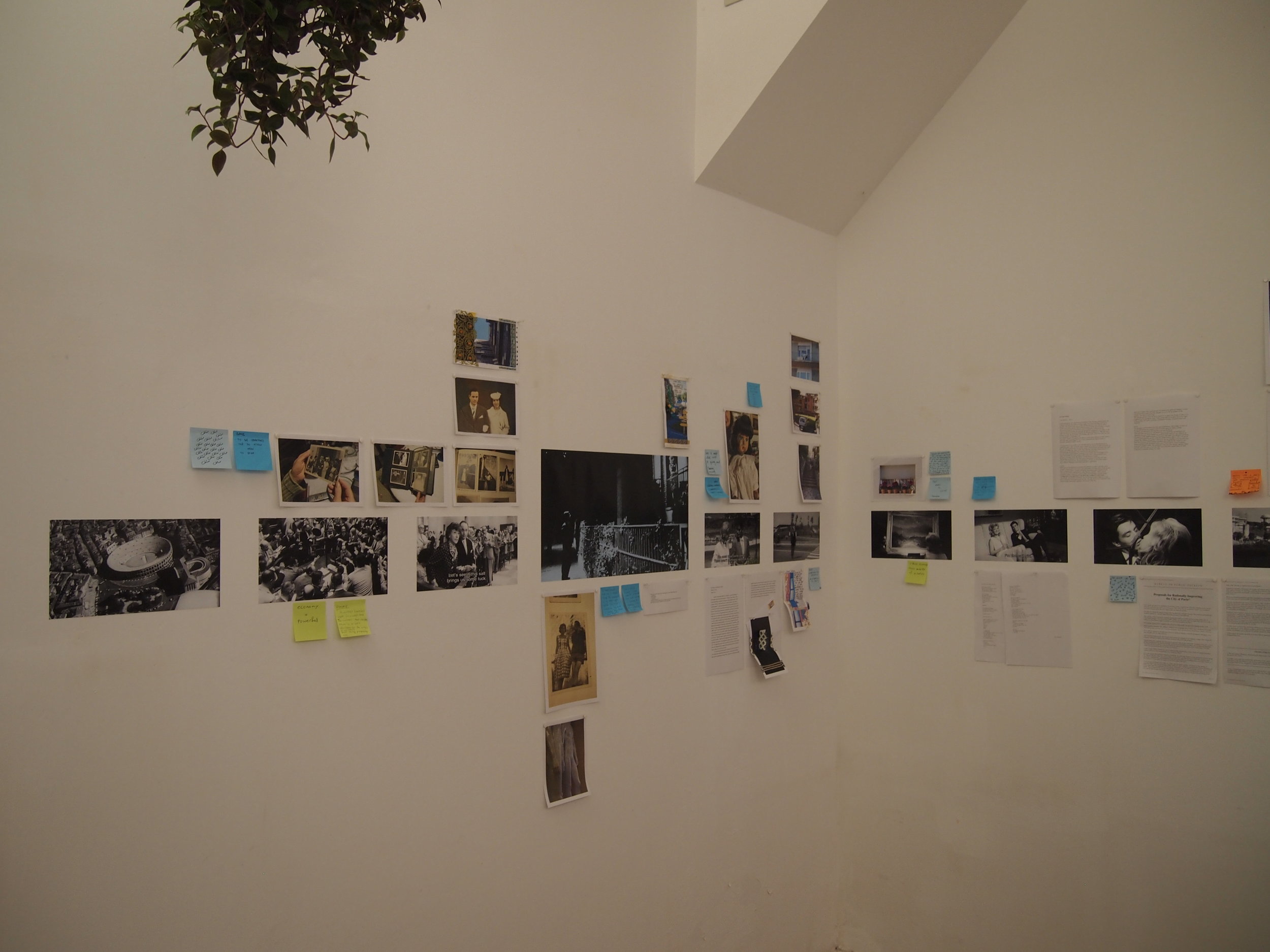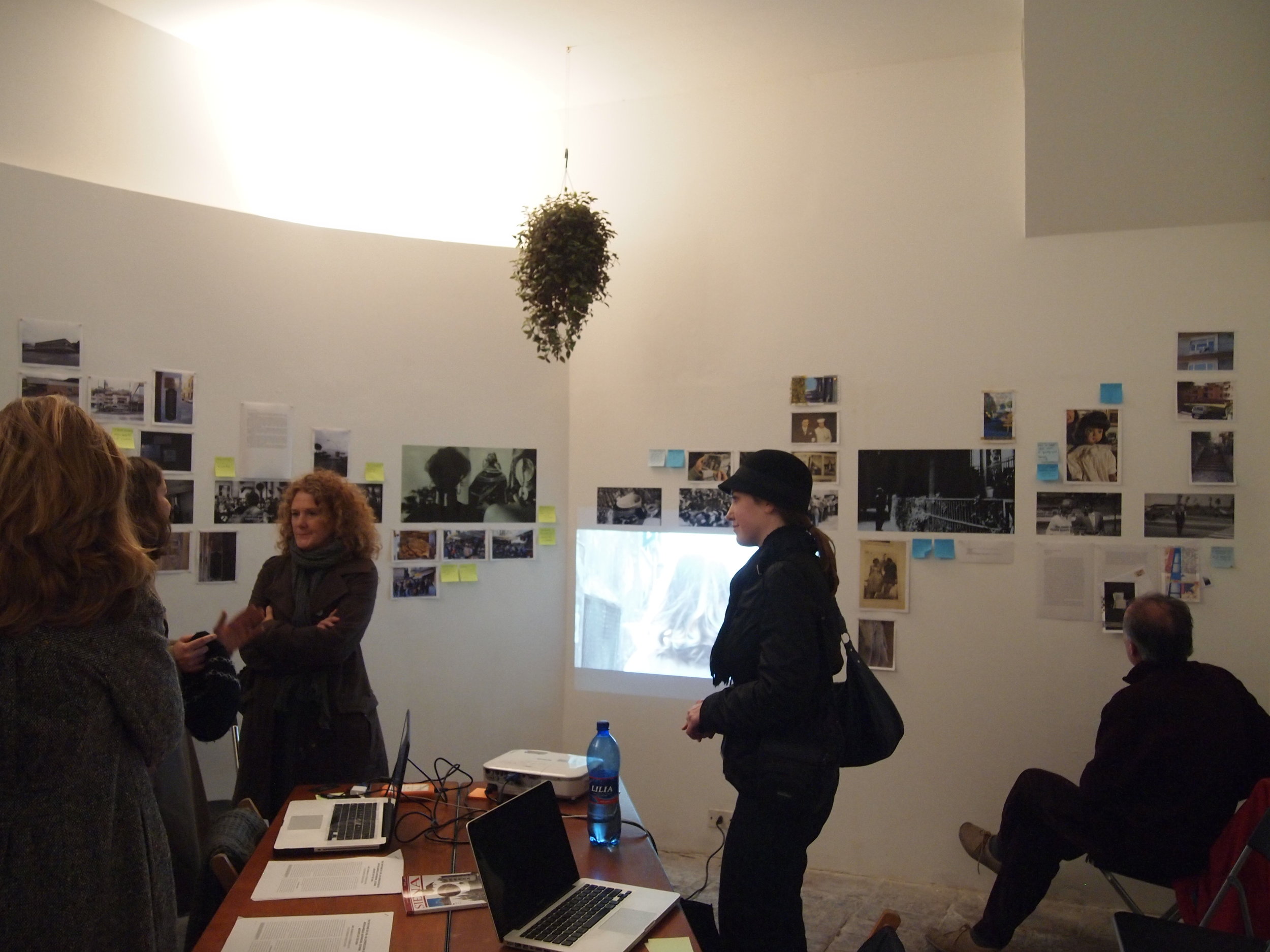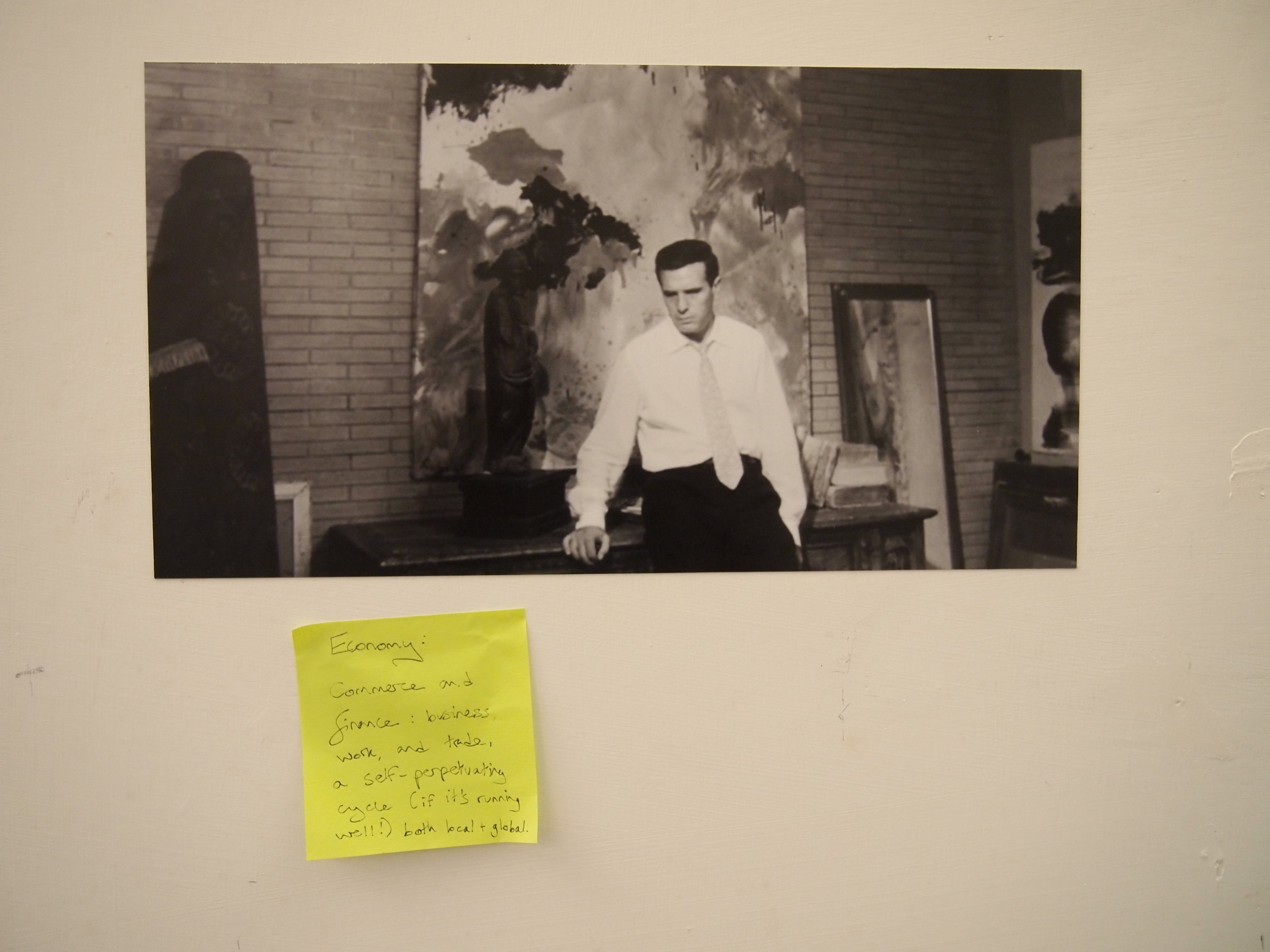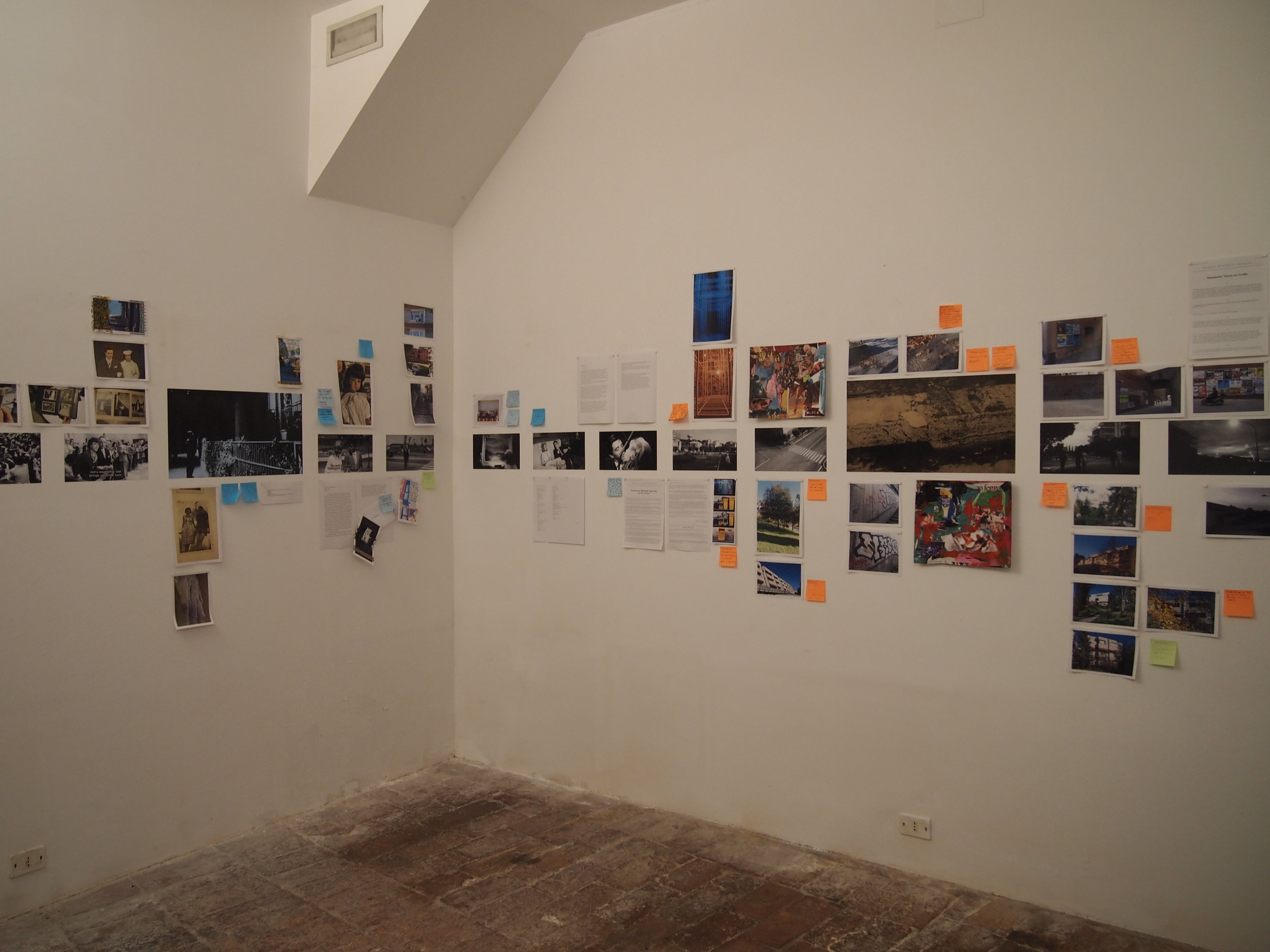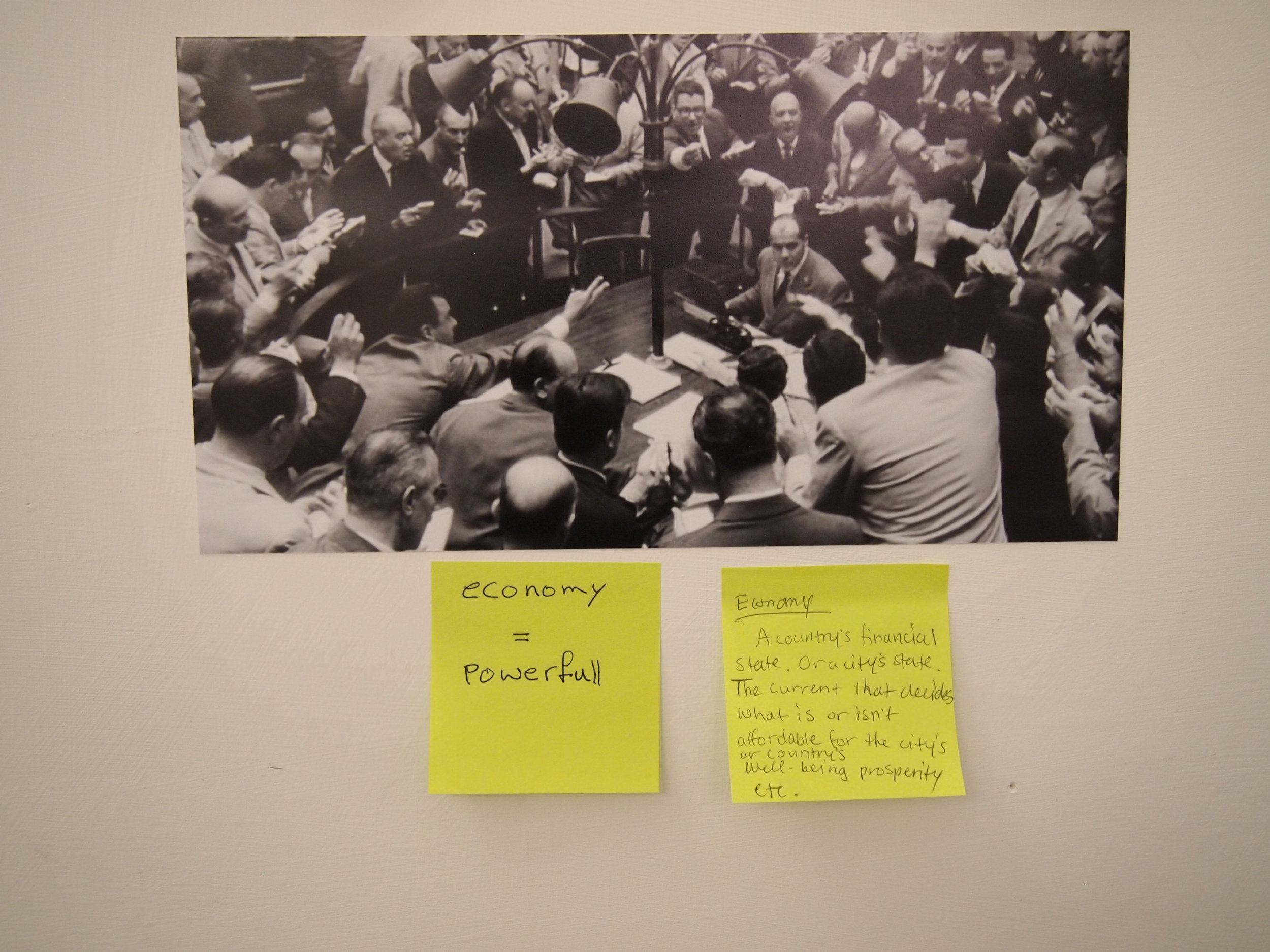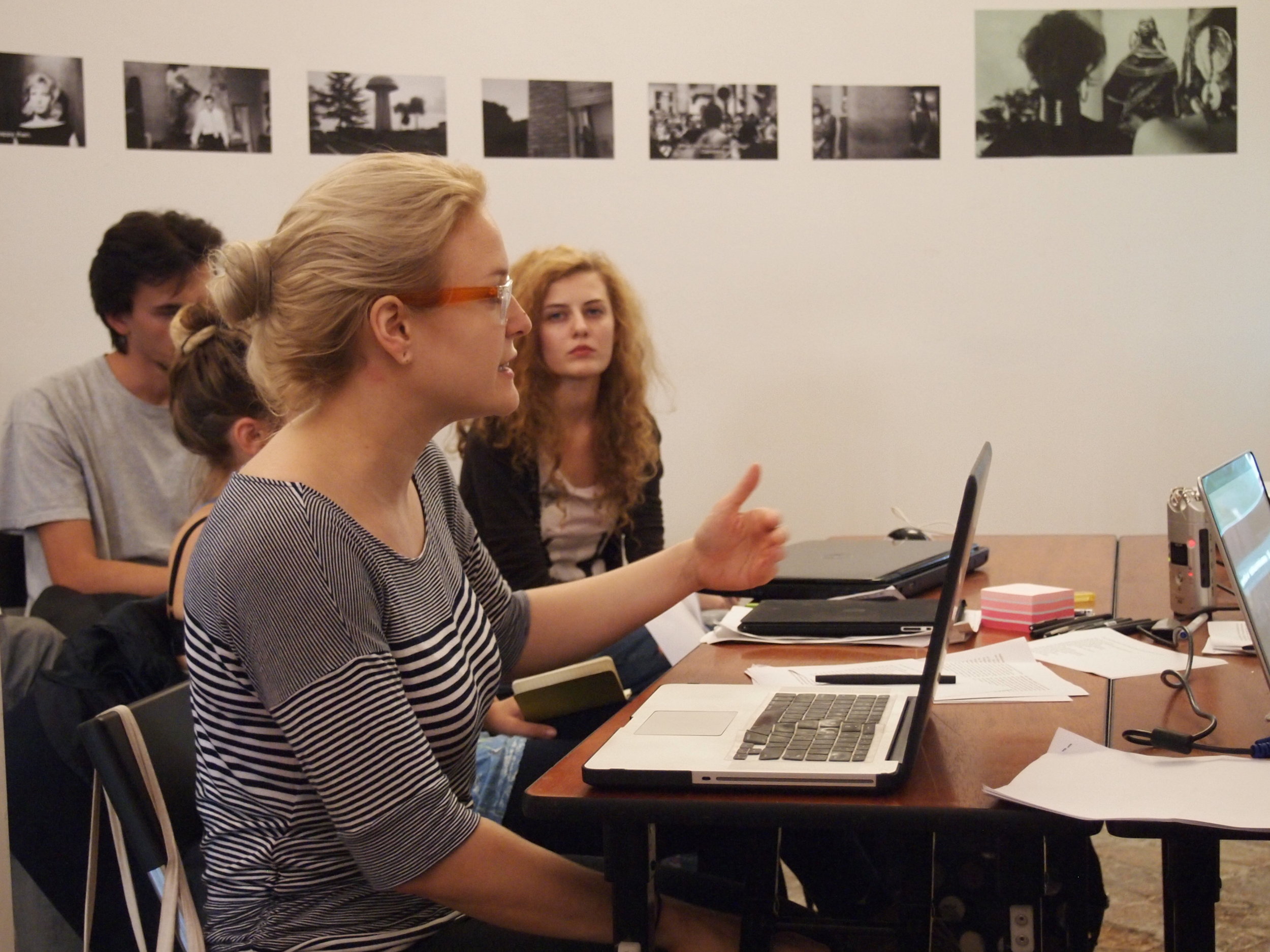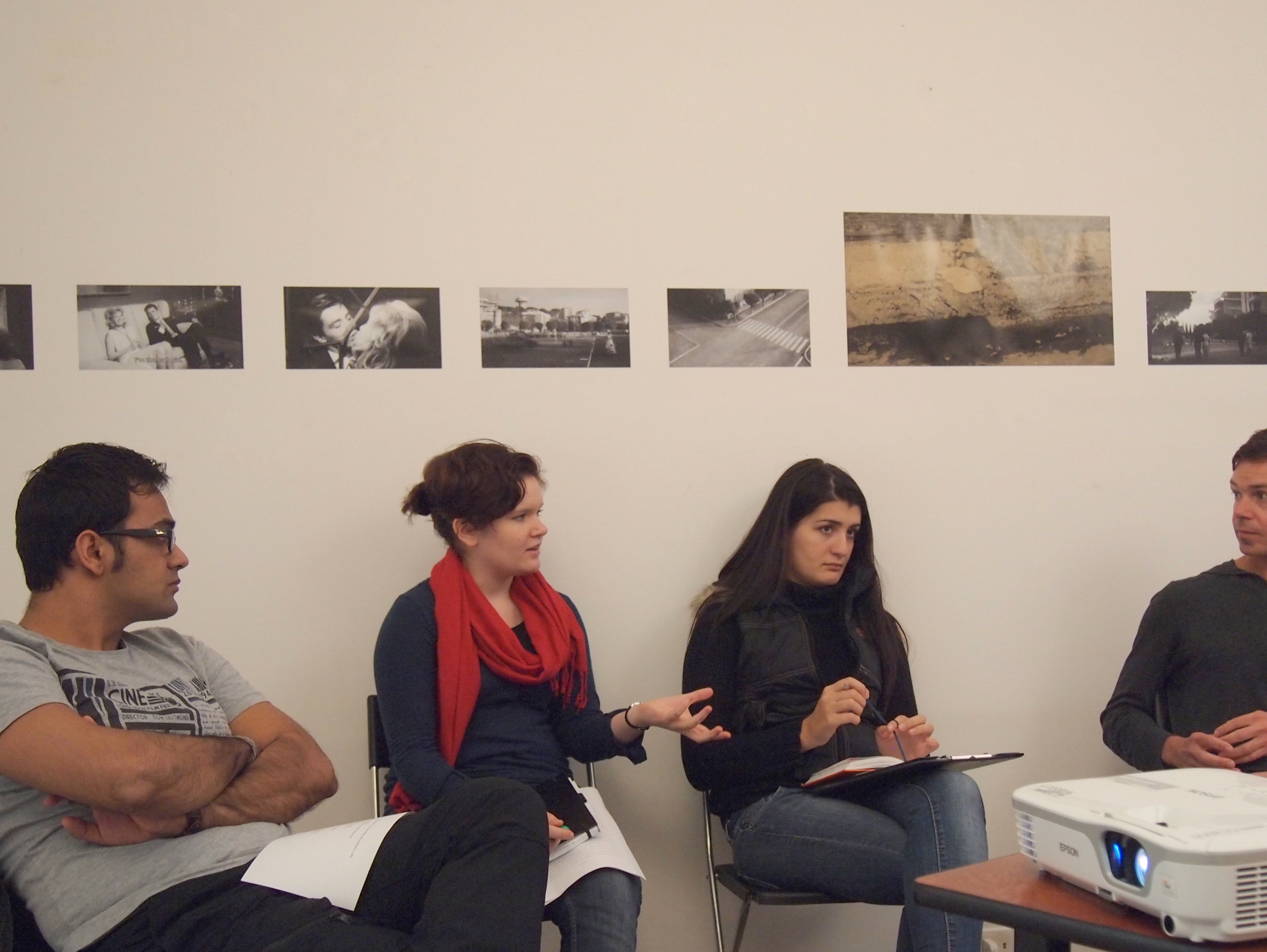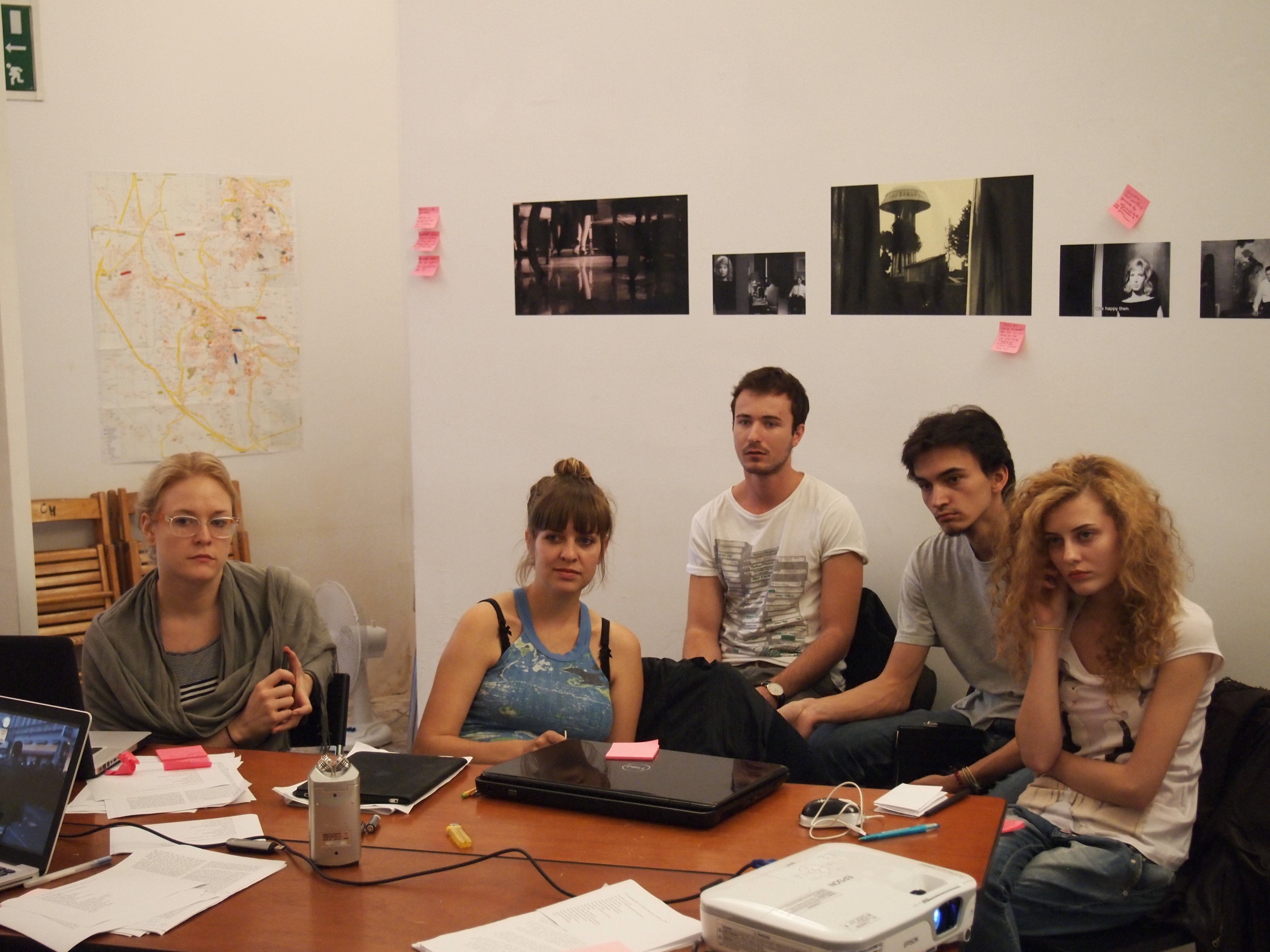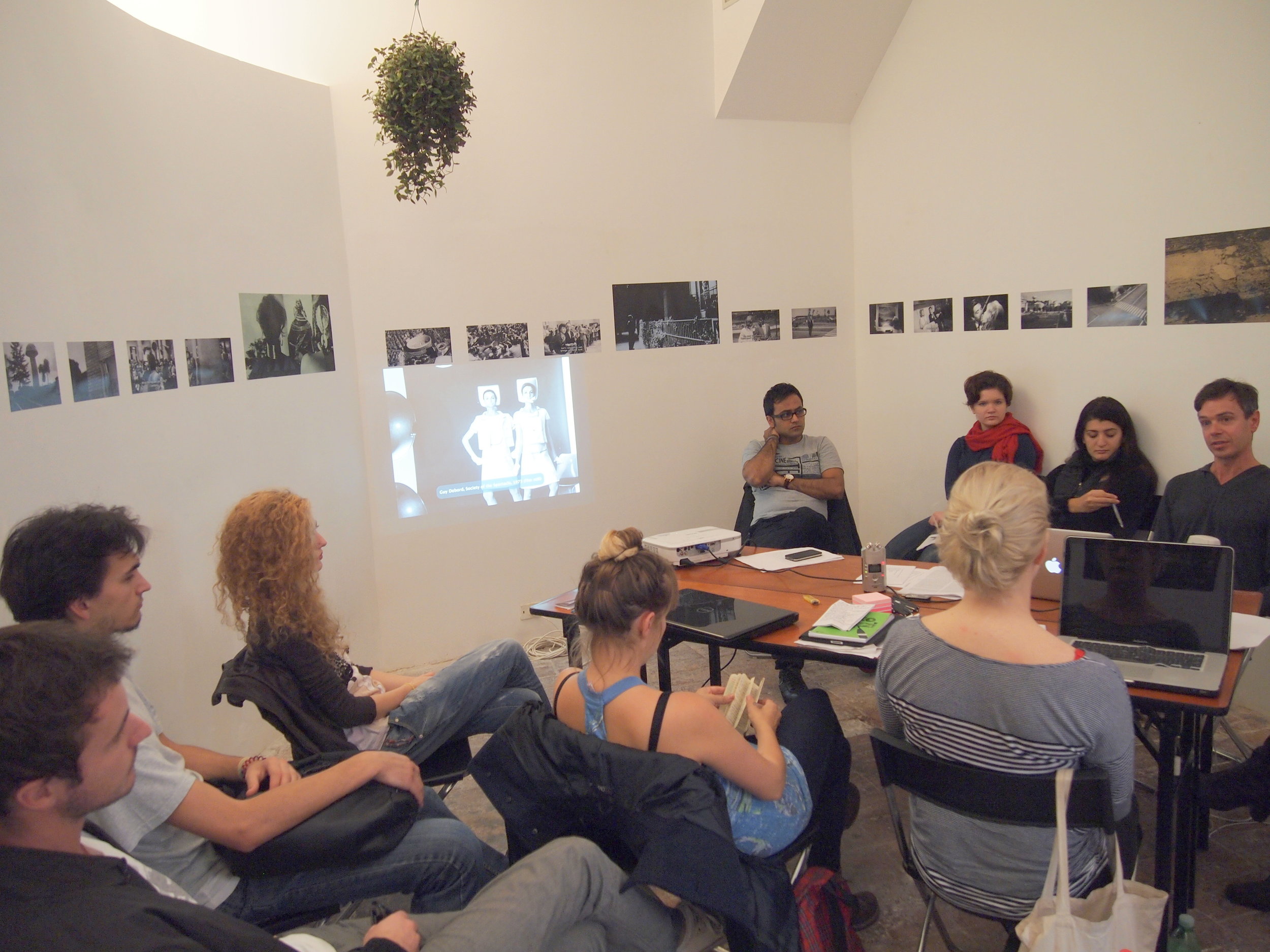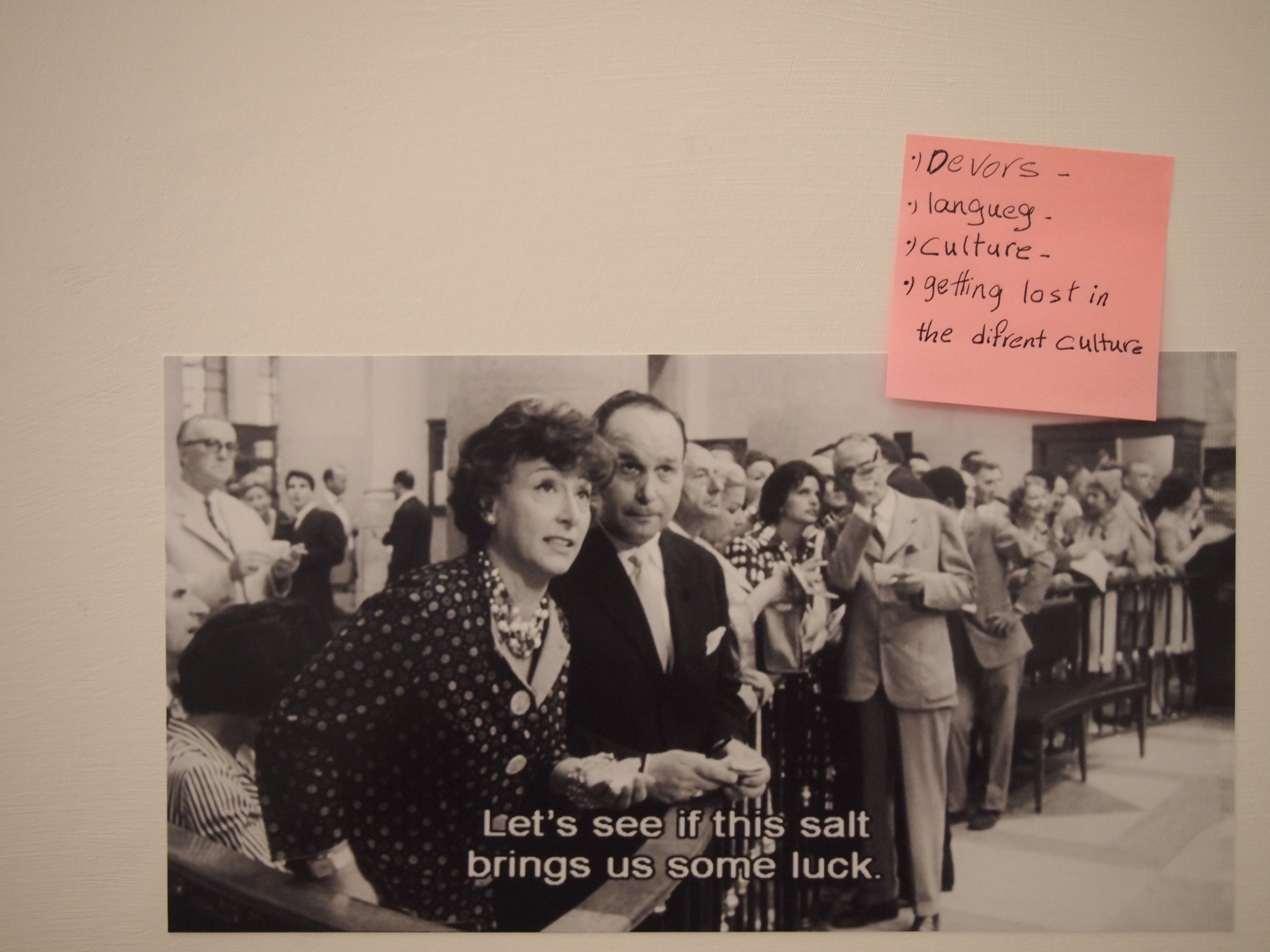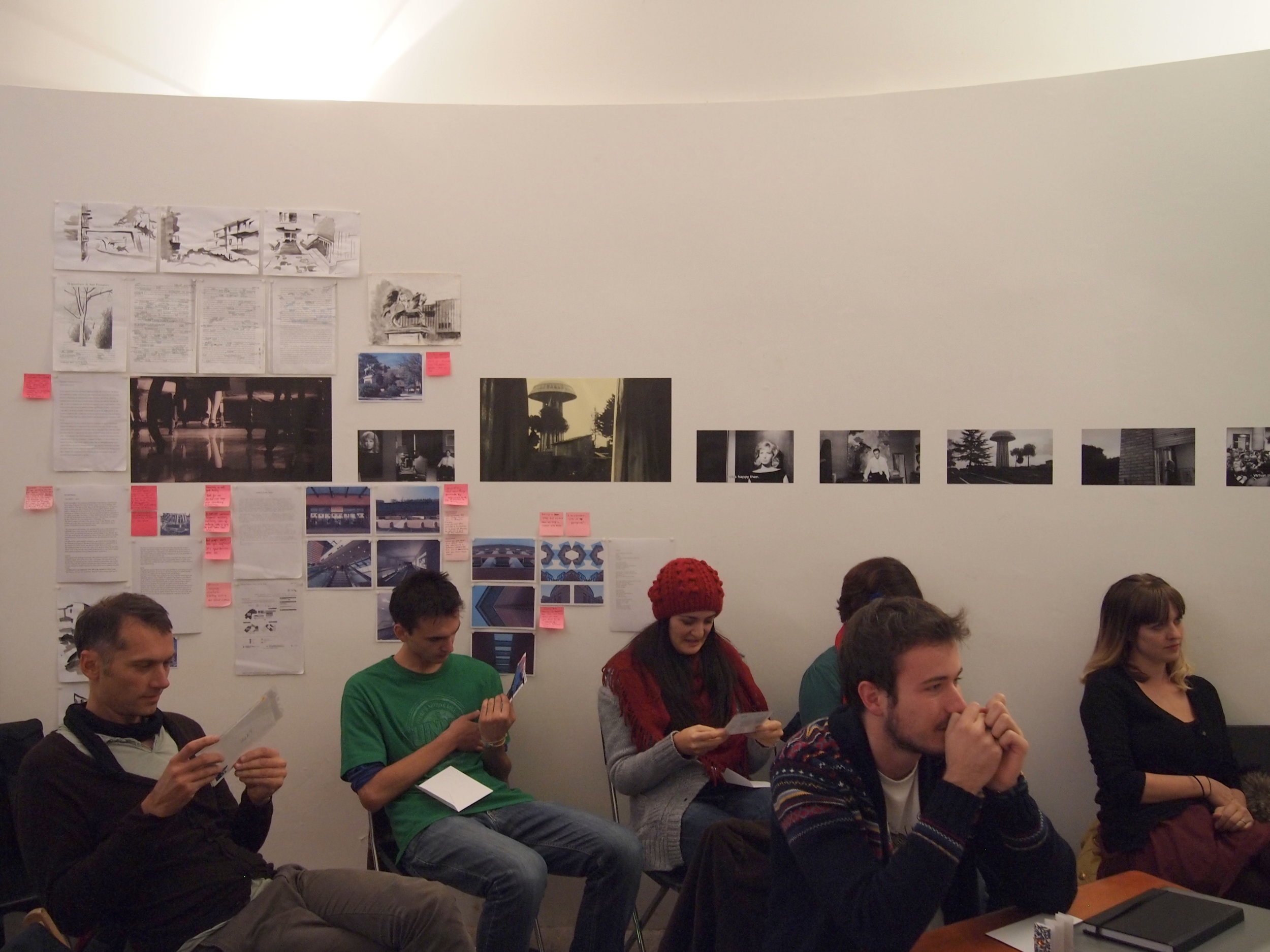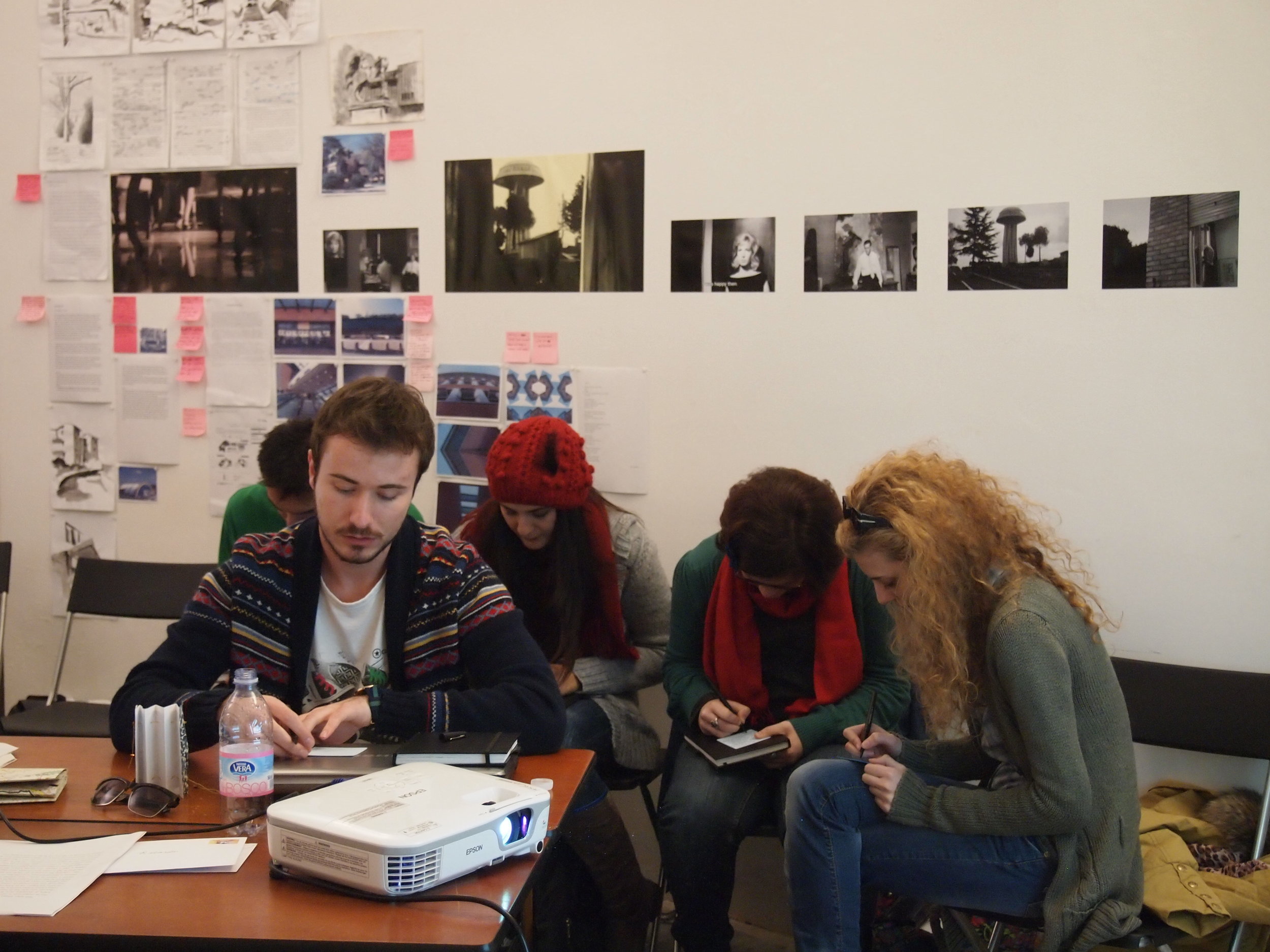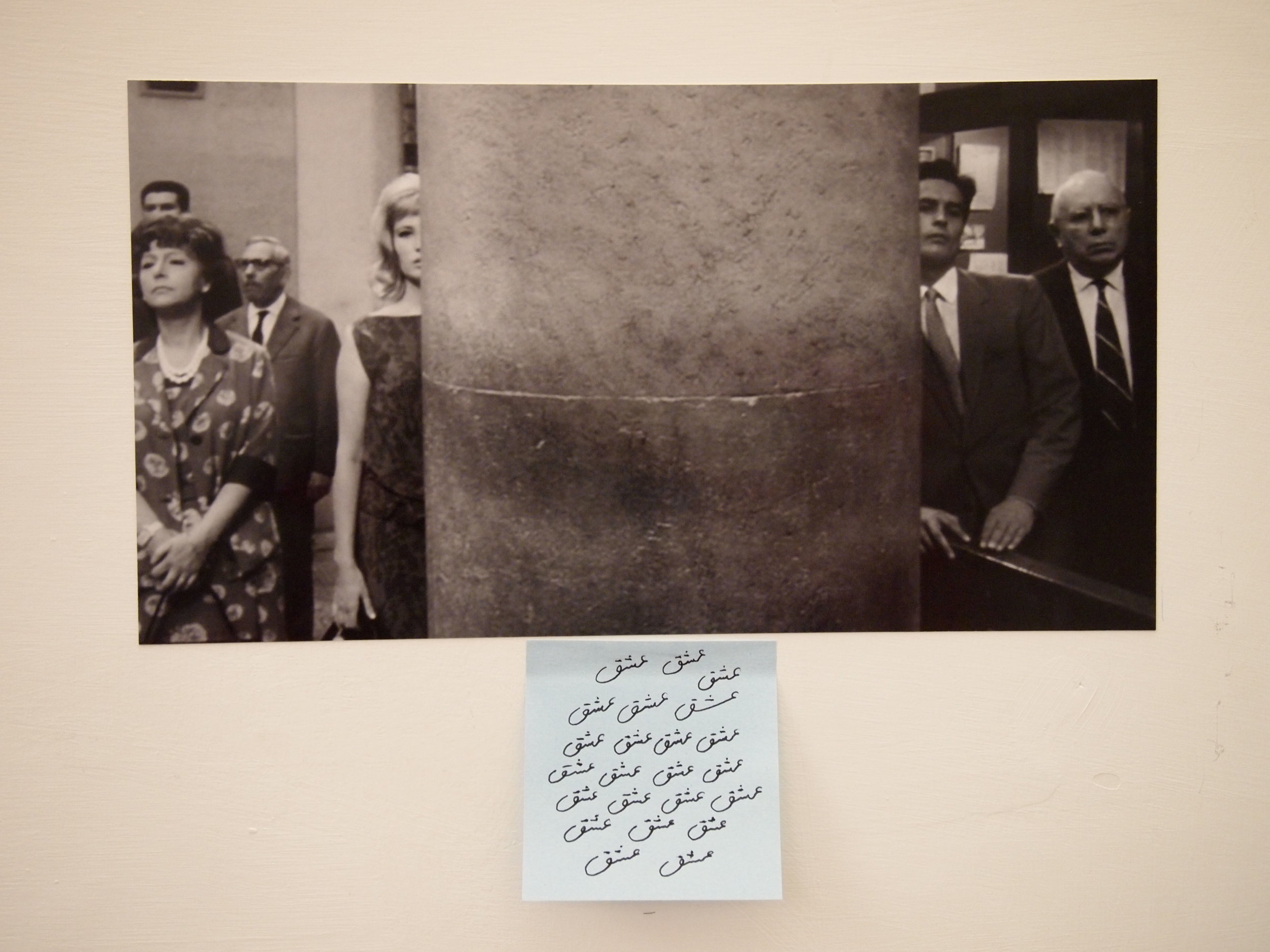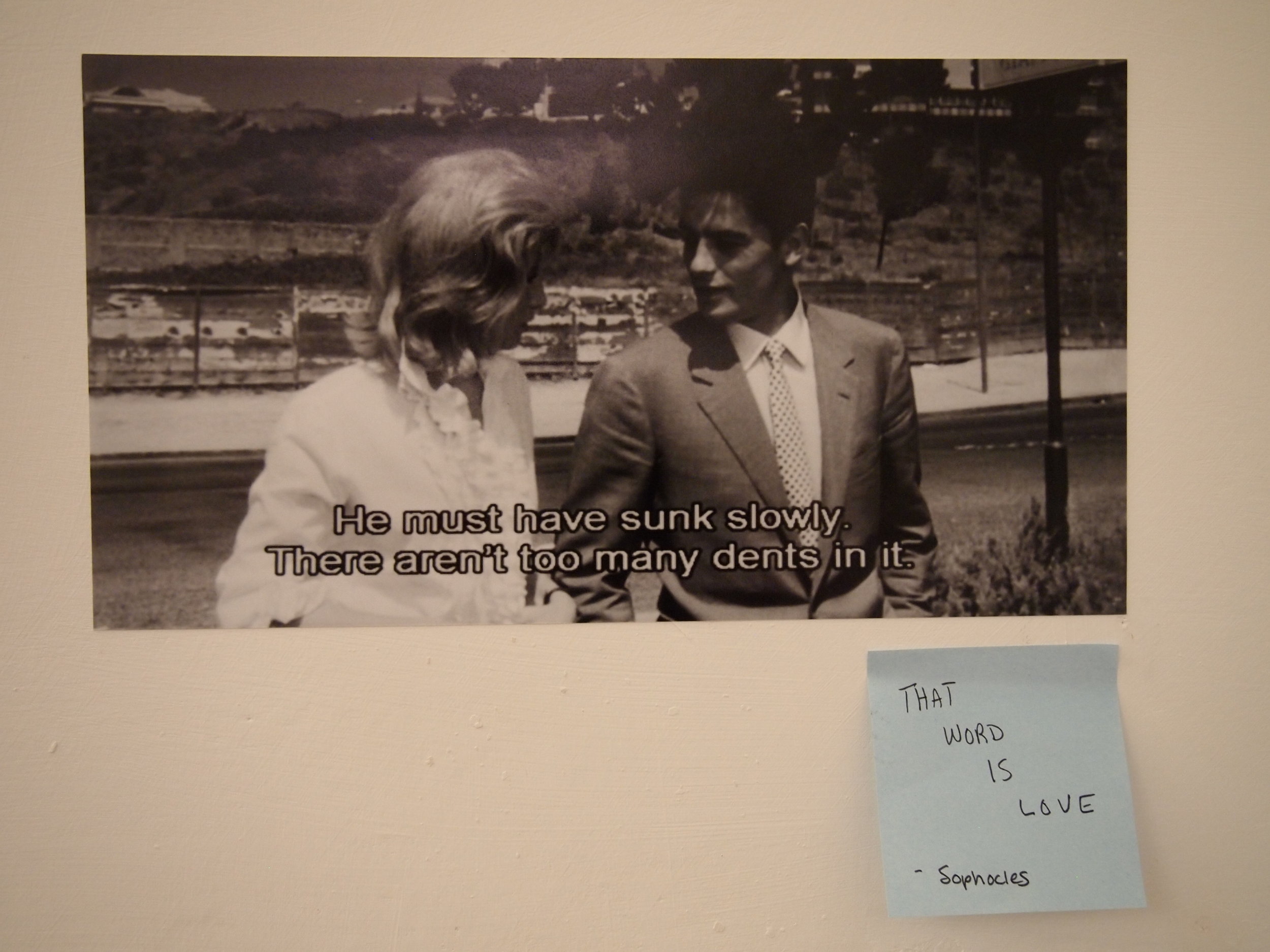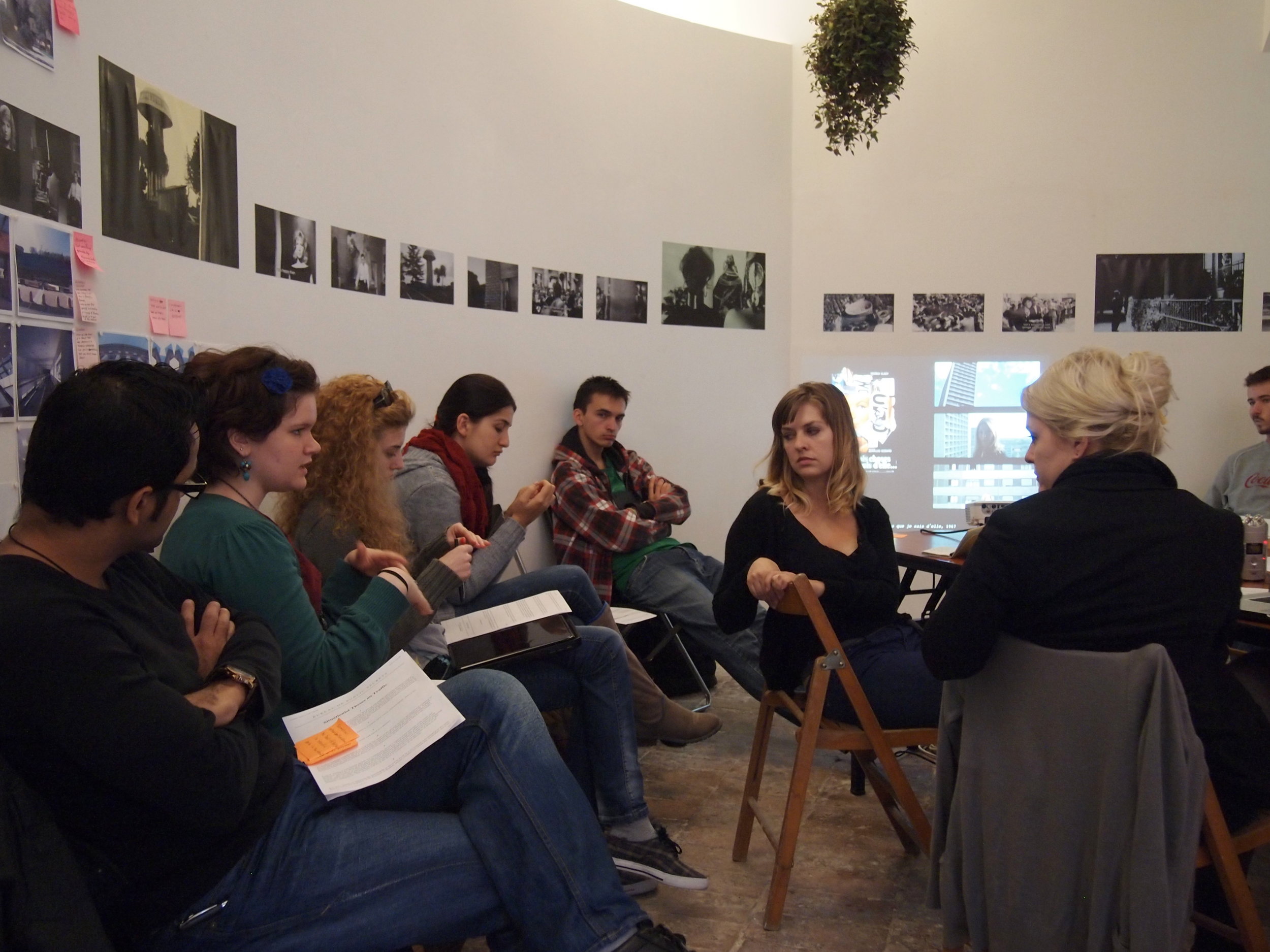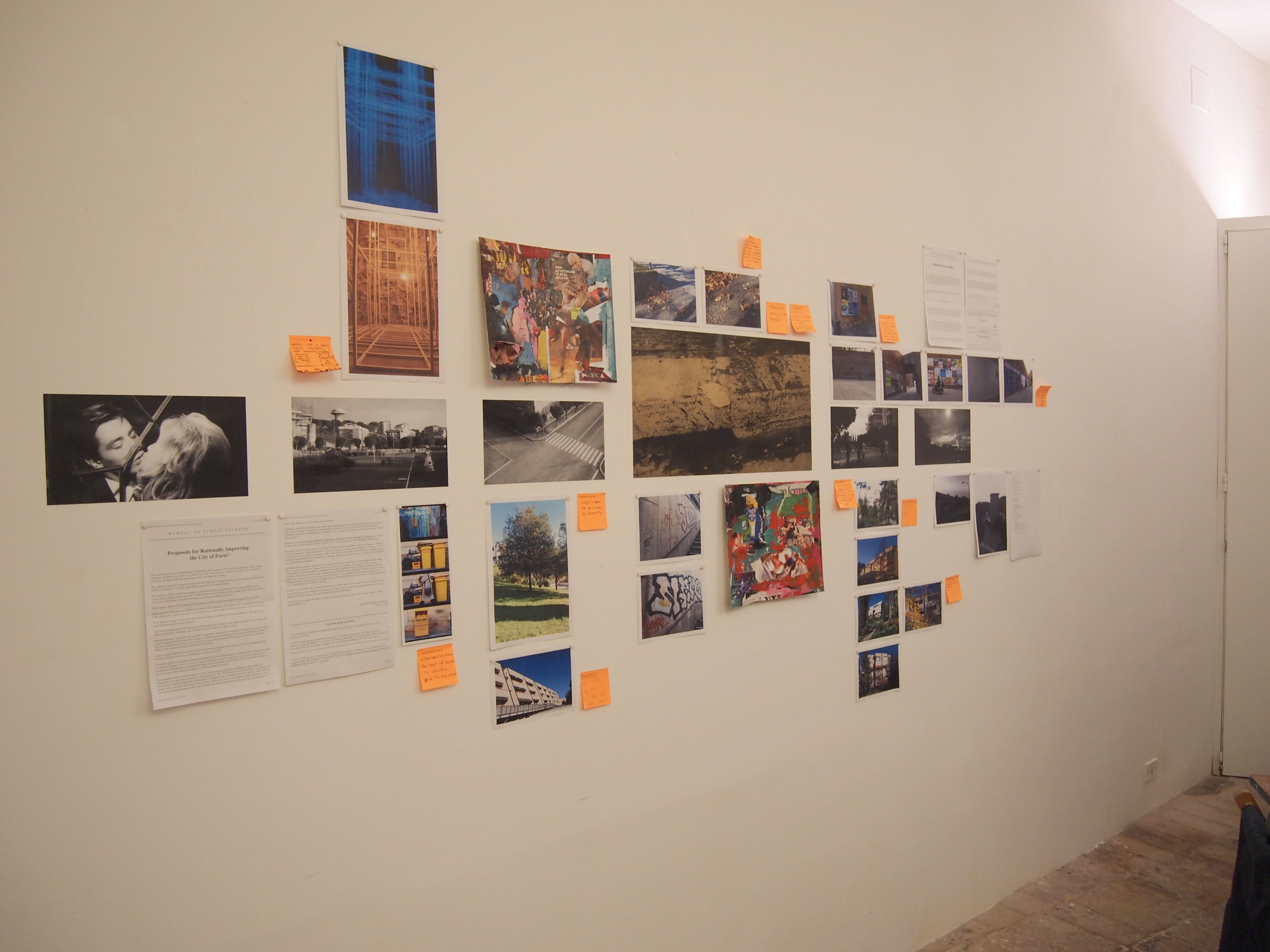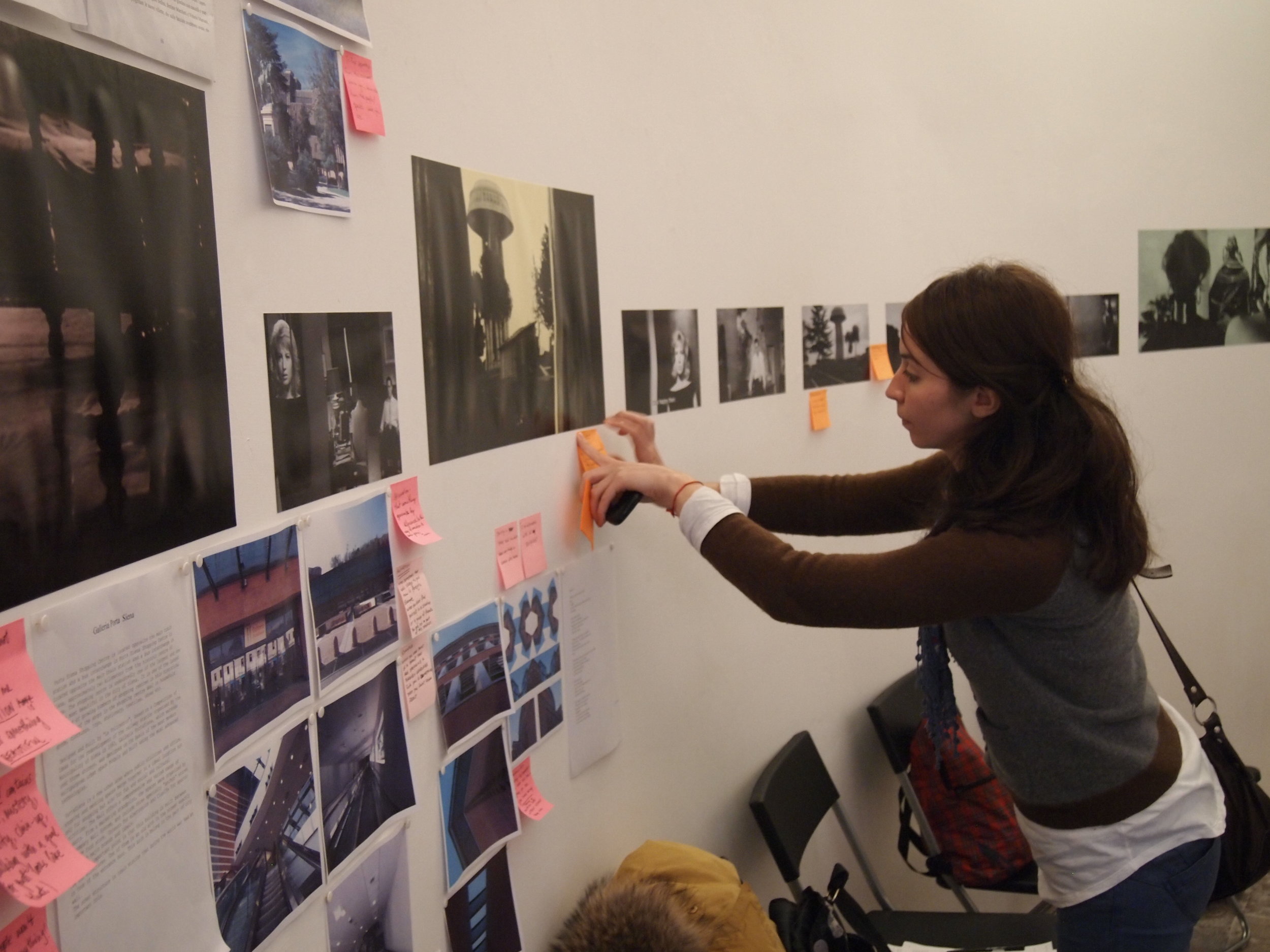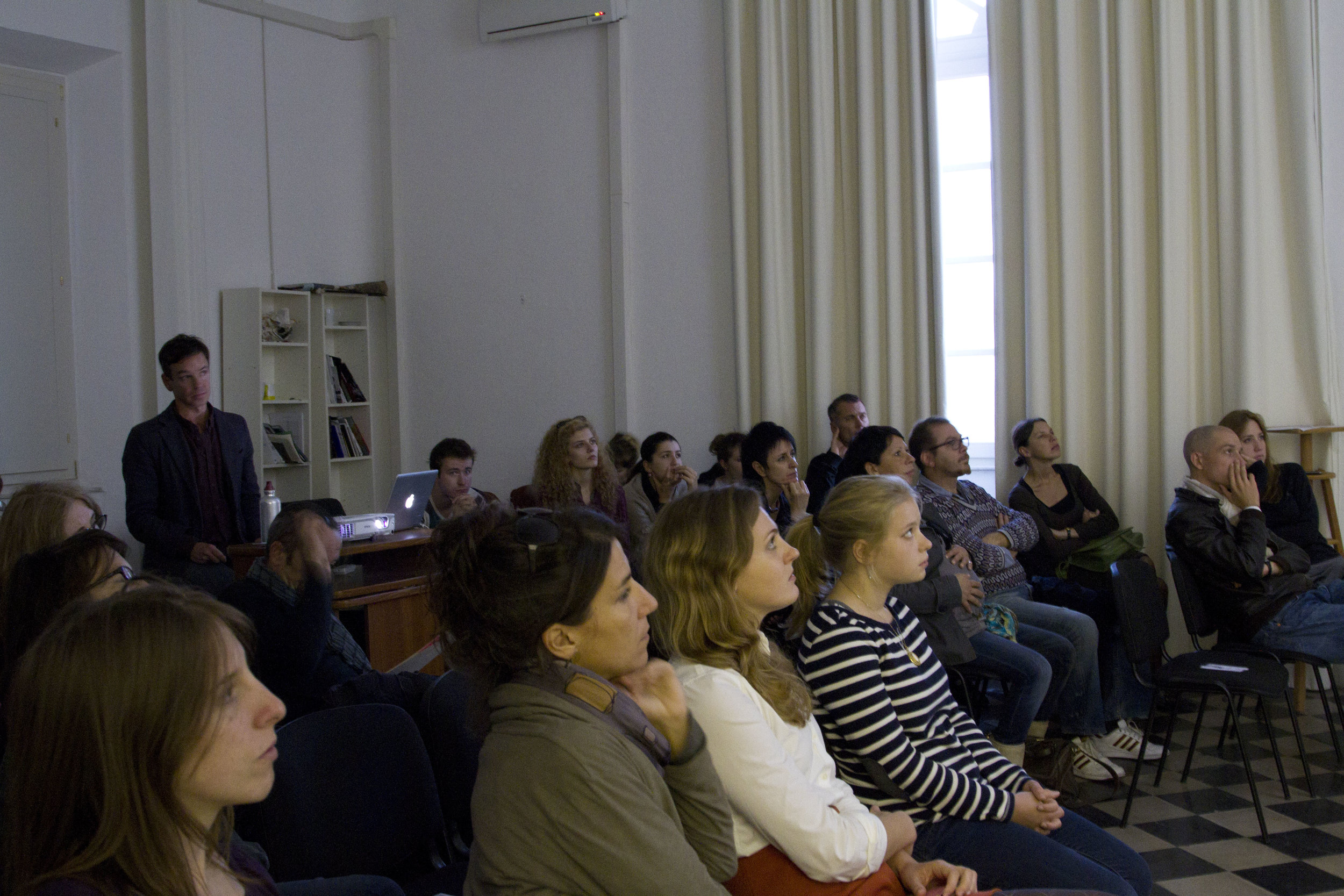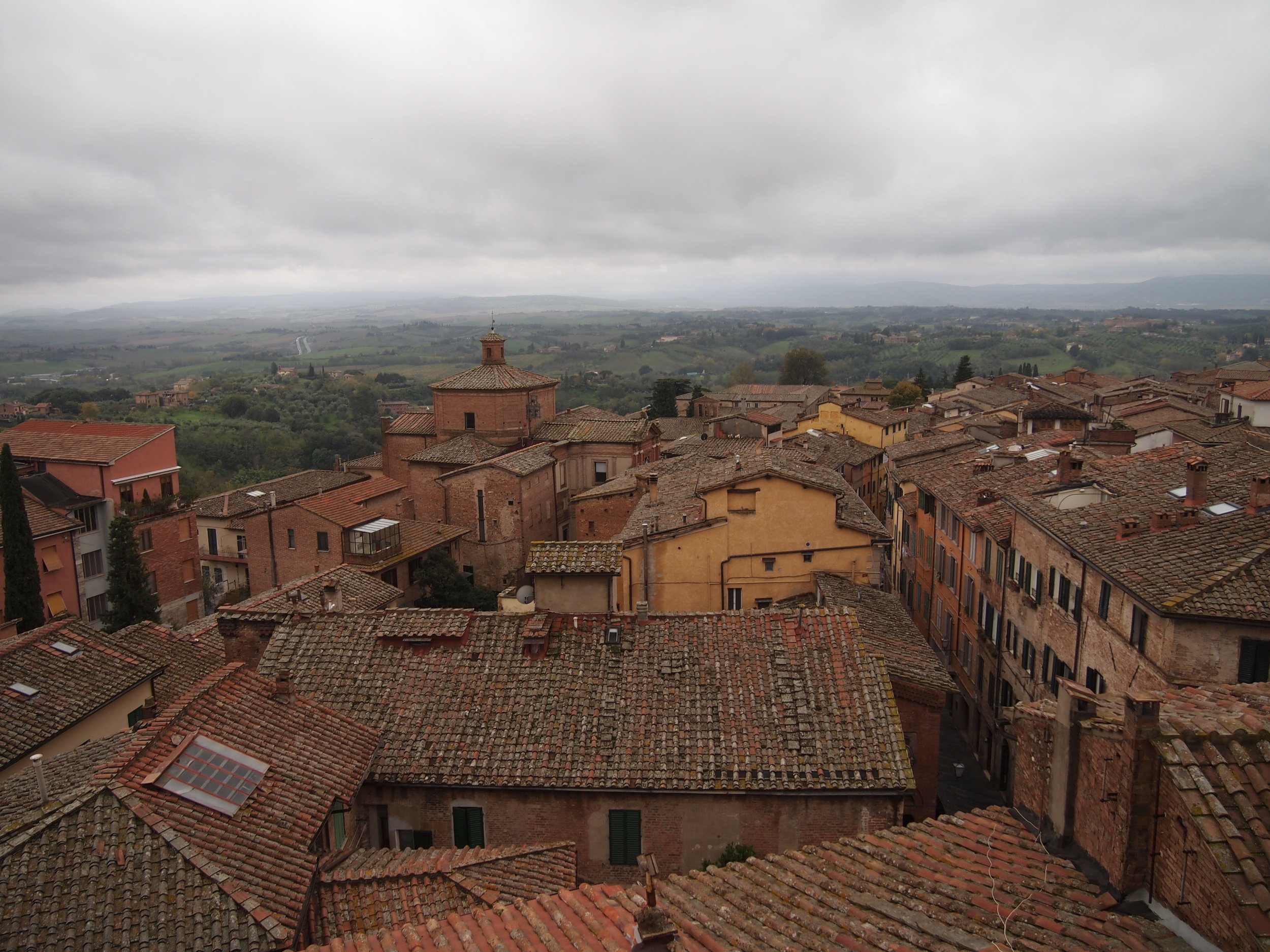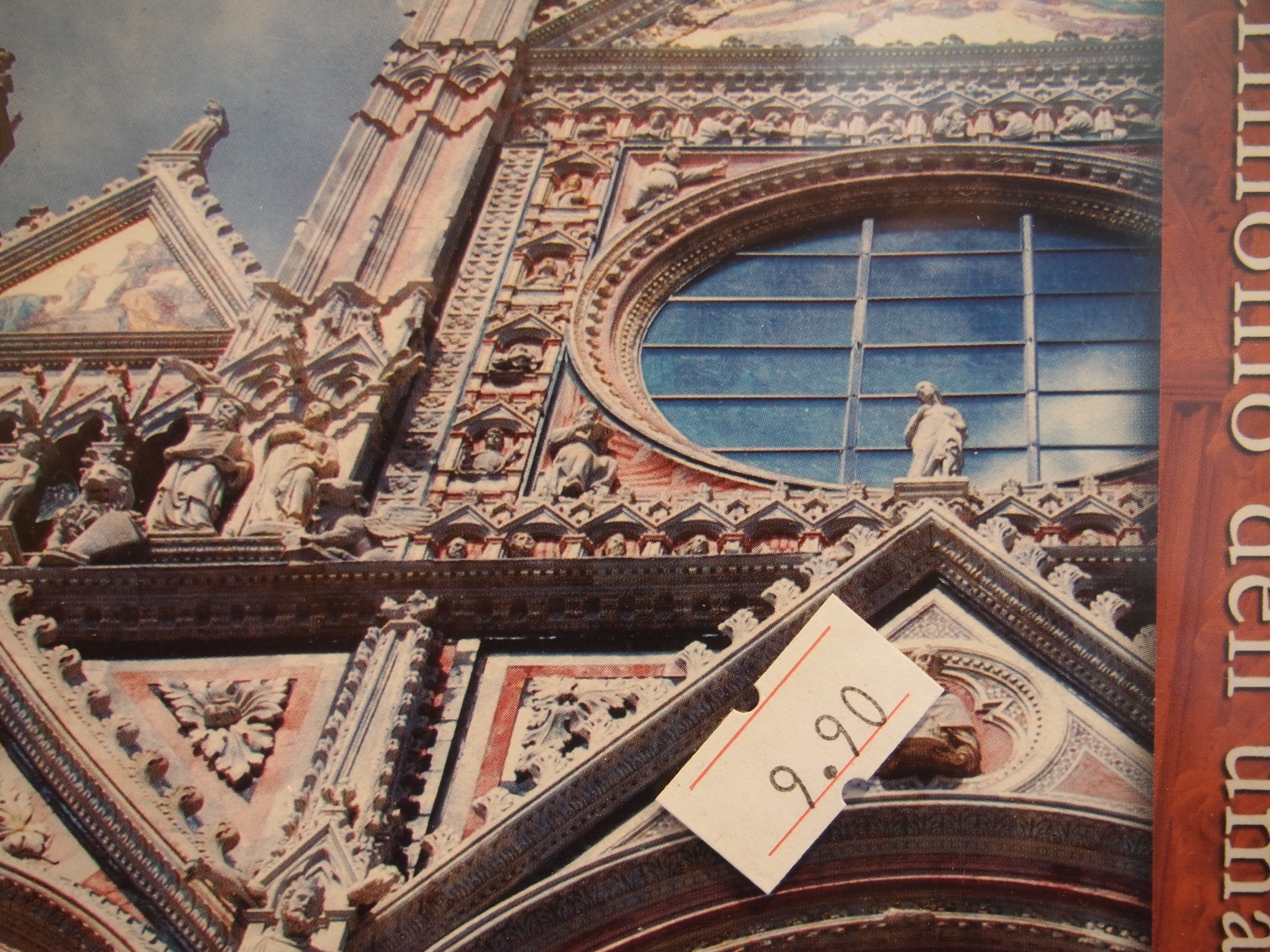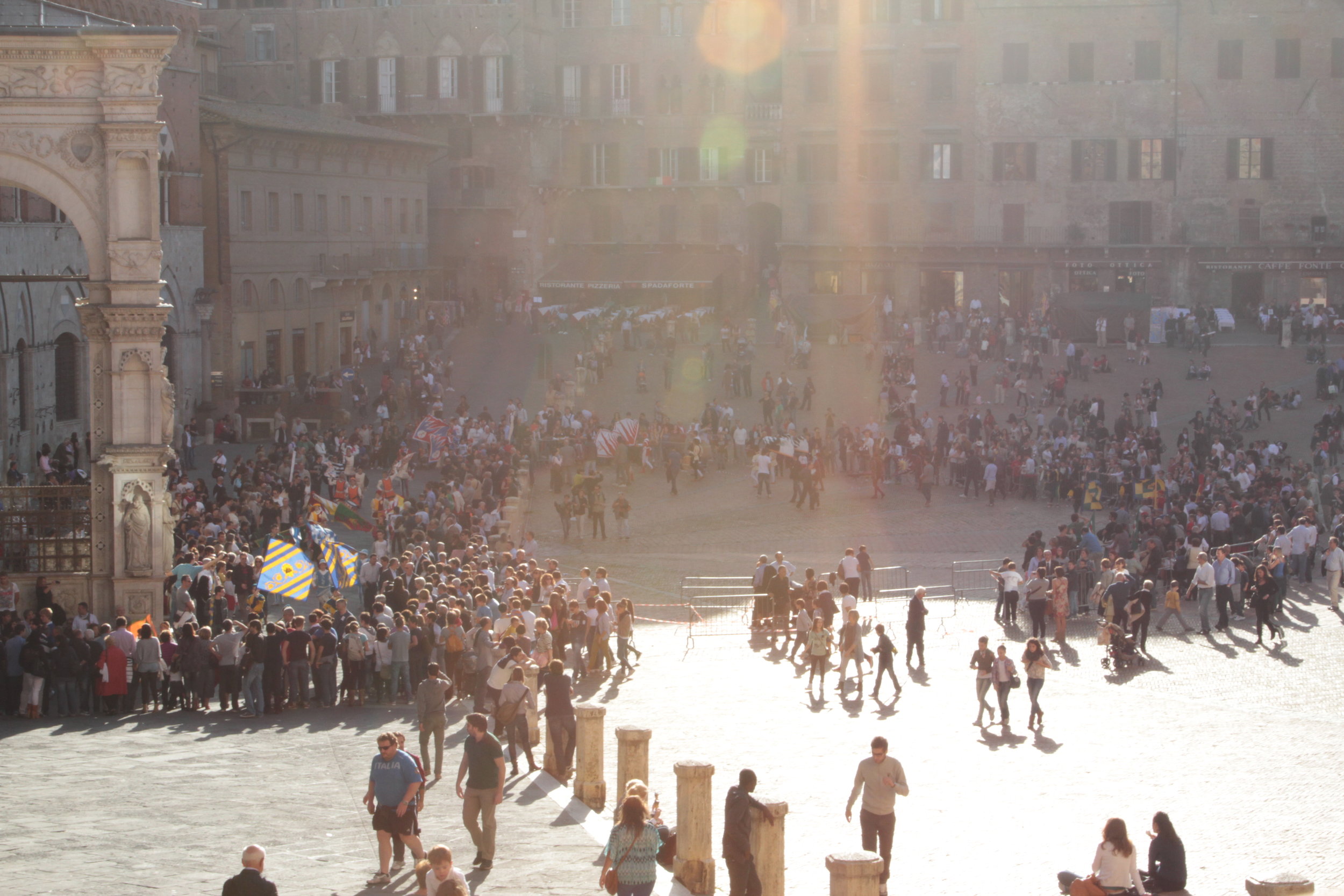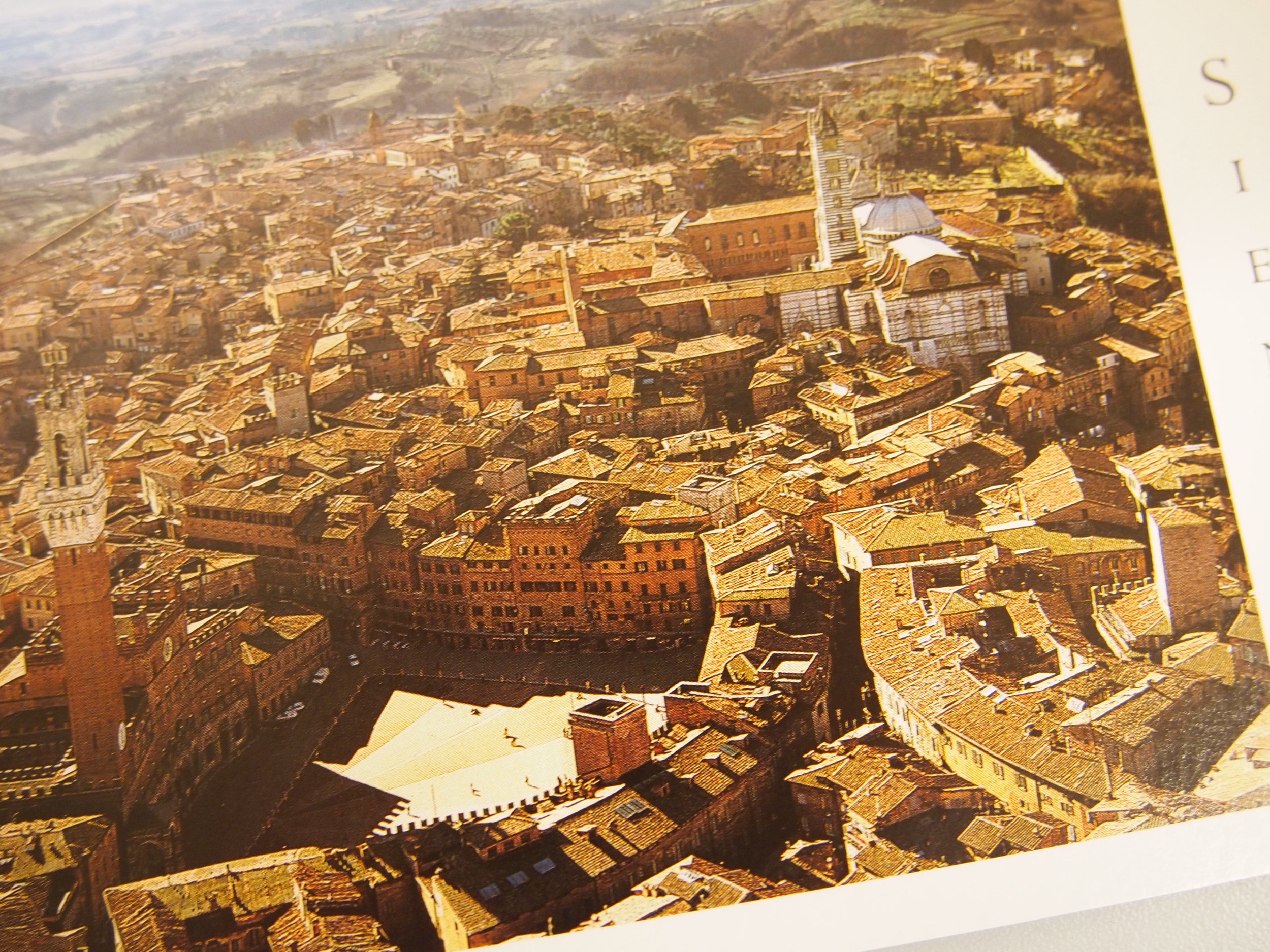L’ECLISSE, redux

An exhibition and academic course using Michelangelo Antonioni’s 1962 film L’eclisse to study postwar urban development and contemporary life in Siena, Italy.
Curated by James Voorhies
Siena Art Institute, Siena, Italy
October 11–November 25, 2012
Made in collaboration with Nate Padavick, Cassandra Troyan, and students of Siena Art Institute: Miloš Gilić, Montenegro; Ruby Hopkins, United States; Geralda Kacorri, Albania; Eva Raspopovic, Montenegro; Traian Tecuci, Moldova; Chelsea Torres, United States; and Amir Zanjani, Iran
Made possible with support of Siena Art Institute, Siena, Italy, as a result of a project fellowship awarded to James Voorhies; realized while I was working as an independent curator
L’ECLISSE, redux was the result of a project fellowship awarded by the Siena Art Institute. The charge was to teach and curate a project. That work transpired through a series of public seminars over course of six weeks, teaching and exhibiting in a small street-level gallery at Via del Poggio 2 in the center of Siena. The space became a combined studio, exhibition, and learning site where 24 film stills from L’eclisse were selected, blown up, printed and installed. The stills were both framework and guide for discussing broad topics such as alienation, architecture, economy, love, and urbanization as related to Siena.
Antonioni’s filmmaking techniques, character development, and narrative structures were analyzed. The film served as an object—a spine—along which visual responses in photography, collage, writing, video, painting, drawing, and performance accrued during the exhibition-course timeframe. The seminars with students were open to the public.
L’ECLISSE, redux was a platform that inverted the typically private activities of an academy into a mode of public performance, exposing and making available the often costly production of knowledge inside higher education institutions. The work attempted to capture the original function of the exhibition as a public sphere which used objects as a primary means to produce knowledge among a group of committed individuals.
A book and film—both titled I was happy then—were produced as a result of this exhibition.
redux
The “redux” series explored the influences cinema has on shaping perspectives of reality by re-positioning historical films within the framework of contemporary exhibition, research and collaboration. The series referred to landmark cinematic projects for presentation of existing work and new commissions in performance, video, sound, and writing.
Book, Booklet, Film, Documentation
...
